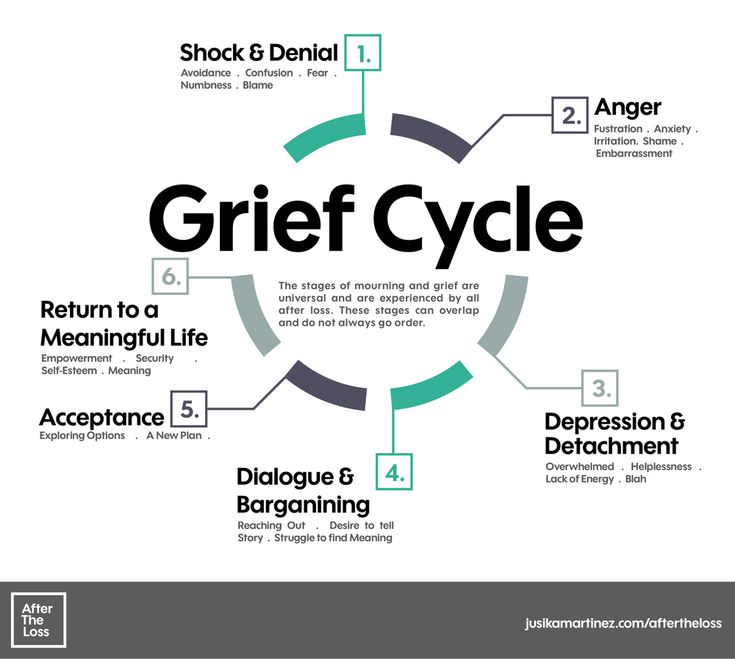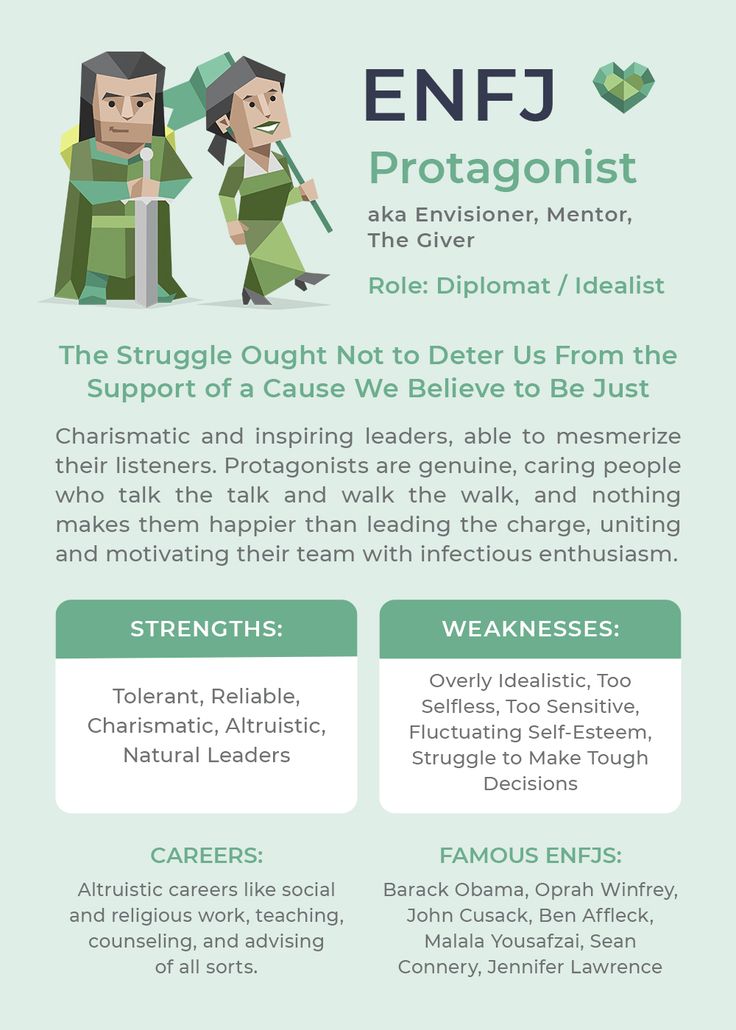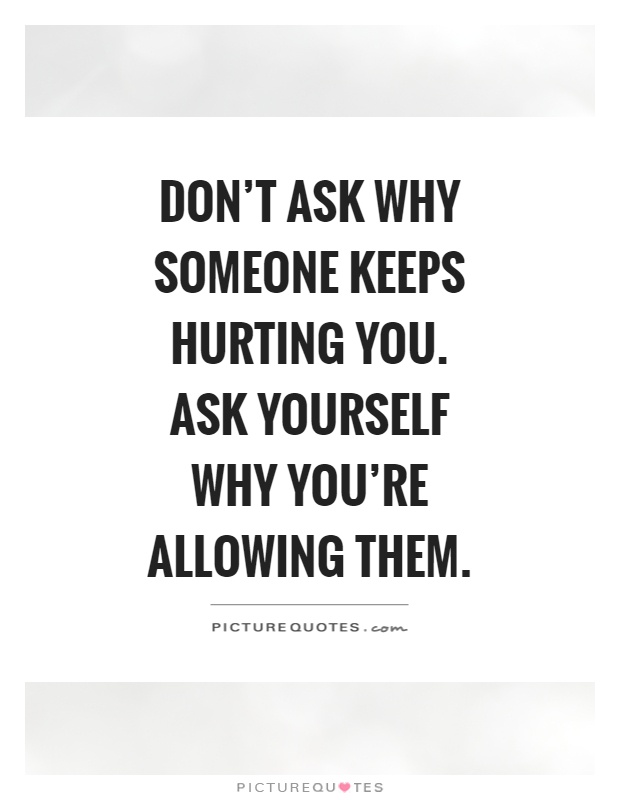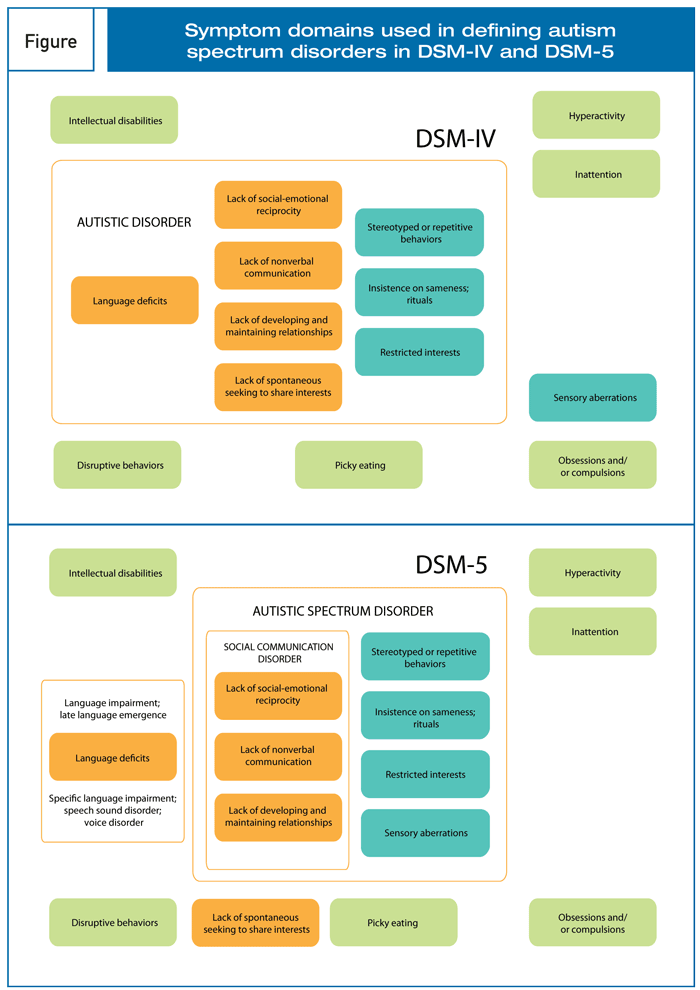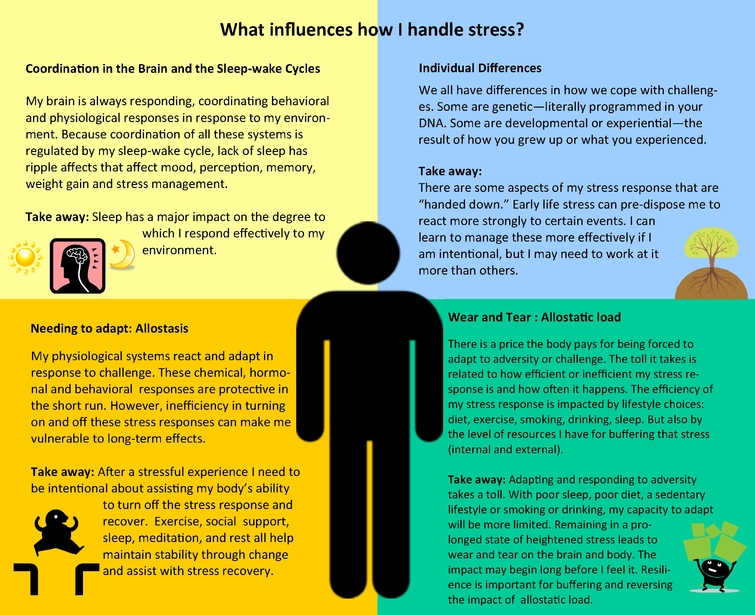The journey of grief diagram
Your Journey Through Grief: Navigating the Grieving Process
Author: Carole McLeodSubscribe
When someone you love has died, your grief journey begins. It can affect you emotionally, physically, spiritually, and socially—every part of your being. It is often painful, overwhelming, and disturbing. It is important in order to heal from this grief wound that you understand how and why you are feeling the way you do and how to cope with it. You can’t go over it, under it or around it; in order to heal your grief wound you must go through this journey.
The Difference Between Grief and Mourning
First of all, grief is a process, it is not a disease that cures quickly; you must heal emotionally and physically from this grief wound. To move through your grief journey, you must learn two words: The first is grief, the inside thoughts and feelings that can be experienced during your grief journey. The other word is mourning, the outside expressions of grief. By learning to mourn your grief you will also learn to cope with those feelings that are inside.
Traveling on your grief journey, you will experience hills, valleys, dangerous curves, and road blocks. These obstacles are called shock and numbness, disbelief, searching, yearning , guilt, anger, and some depression. The final step you’ll take on your grief journey is reconciliation, which means that you will learn how to live without the physical being of your loved one; but with the love and memories that you have with them.
In general, the world’s society would have you to believe that your loved one is gone, there is no connection to them, and you need to “get over” your grief. The truth is, your loved one remains with you through the love and memories you have for them. Have you stopped loving your loved one or have you forgotten them? We have been given a gift of love and memory and therefore, you will always have that with you as you walk through your grief journey and the rest of your life.
Have you stopped loving your loved one or have you forgotten them? We have been given a gift of love and memory and therefore, you will always have that with you as you walk through your grief journey and the rest of your life.
Suggestions for Mourning
Below are some ways you can get through the mourning process. You may not embrace every single one of these actions, but they’re all a natural part of mourning and are there for you if you need them.
Cry- Tears are very healing, they are nature’s way of helping you. It’s OK to cry. Every tear shed is a step moving forward on your grief journey.
Talking– Find a good support person, one who is not judgmental and a good listener. Avoid someone who is critical. Remember, it is your grief and you have the right to express your grief the way you want to and when you need to. Also, encourage relatives, friends or co-workers to talk about your loved one. Let them know that you like to hear your loved one’s name when talking and remembering them.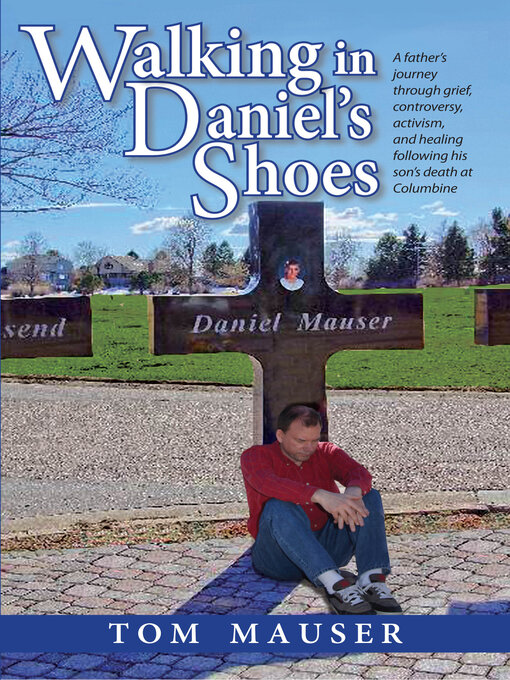
Remembering– It’s important to keep memories alive. One way you can do this is to make a scrapbook of just your loved one not a family album. This is a good mourning exercise for you, your family, and friends. When getting rid of personal items be sure to keep a keepsake, something special and meaningful for you.
Journaling– Release your emotions on paper. Writing is good mourning; remember to date the journal, letter, or whatever you use so that you can go back to that date and see how far you have traveled in your journey. Sometimes people who are mourning find writing/journaling the easiest way to express their emotions.
Join a support group– It is always helpful to share with others that are grieving. A support group will also give you opportunities to learn new ways to work out problems and befriend others who are grieving.
Take care of the physical you– Now is the time to start making sure you’re eating a diet, getting enough exercise, treat yourself to massage, long hot baths, know your numbers (blood pressure, pulse, and tests to make sure your sugar, liver, heart are healthy). Don’t forget to maintain good fluid intake; people who are grieving tend to be dehydrated, so try to drink 5-6 glasses of water, and avoid excessive caffeine and alcohol.
Don’t forget to maintain good fluid intake; people who are grieving tend to be dehydrated, so try to drink 5-6 glasses of water, and avoid excessive caffeine and alcohol.
Remember these are just suggested guidelines to help you with your grief journey. Everyone is unique and no two people grieve alike.
Also remember, you alone need to work through your grief, but you can’t do it alone…reach out to someone. In addition to finding other local resources for others who are grieving or professional counseling, here are some helpful suggestions to start you on your journey:
RESOURCES
- Dr. Alan D. Wolfelt, Ph.D, Center for Loss and Life Transition, Ft. Collins, CO.
- Web site: www centerforloss.com
- Phone: 970-226-6050
- In addition to his work with the Center for Loss and Life Transition, Dr. Wolfelt wrote a book titled Understanding Your Grief, which may be helpful to those who want to do more work on their own before meeting with a group.
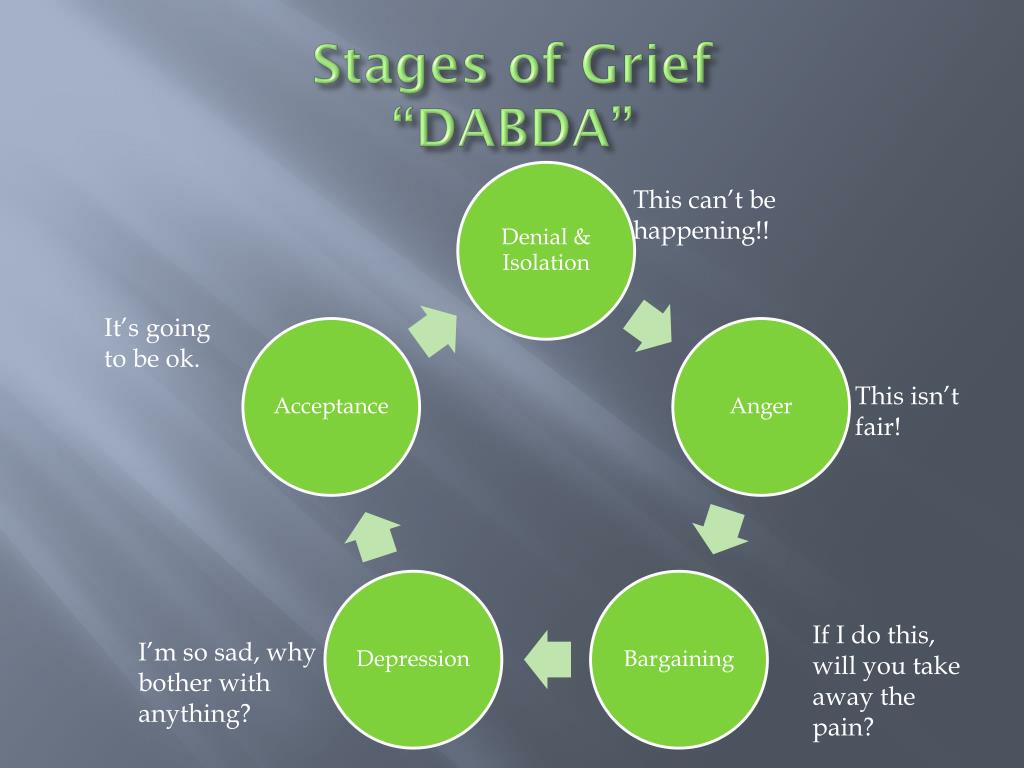
- For support groups contact your local hospice, churches, senior organizations.
- Subscribe to magazine Grief Digest, www.centering.org phone: 866-218-0101
About Carole McLeod:
Carole McLeod is a certified bereavement facilitator with more than 40 years of experience. In 1985, she and her husband established Comfort Circle, the only grief support group of its kind in their area. After Alan passed away in 1999, Carole earned certification from the American Academy of Bereavement.
During her work as Continuing Care Coordinator, Carole founded several grief care programs and developed a social group for widows called “Widows on the Way.” Also known as the WOW GALS, their mission is to help widows feel comfortable re-joining a social atmosphere by being themselves, having fun, and finding new friends who are also widowed.
In 2011, Carole founded Grief Matters, a grief service and resource for anyone who has had a death of a loved one and an educational resource for caregivers.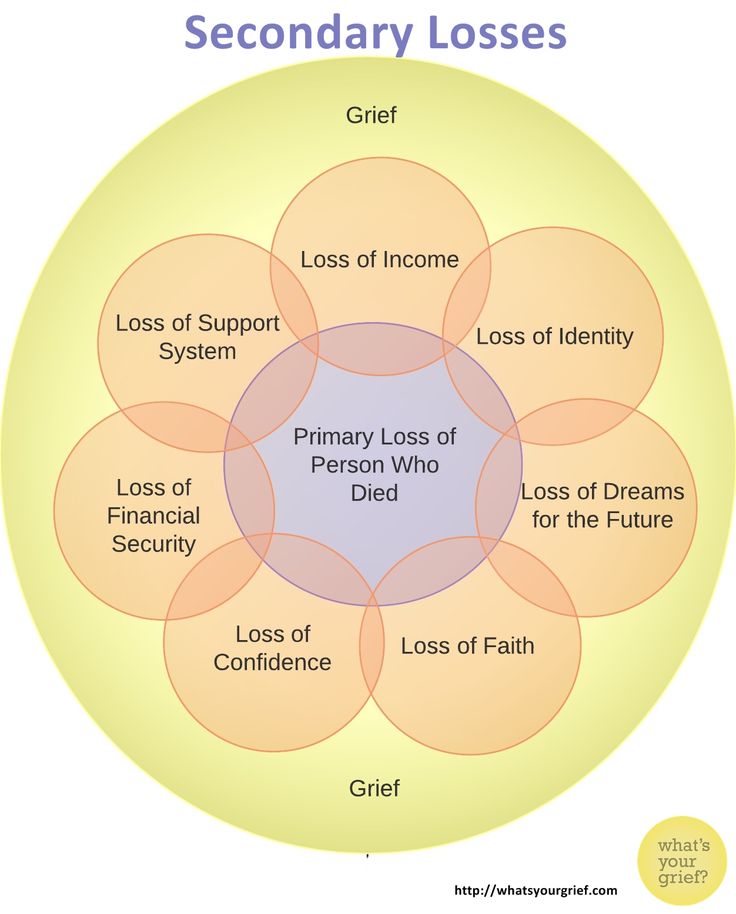 She gives presentations to community groups, churches and has written many articles on grief and mourning for senior newsletters, bulletins and publishes an e-newsletter called “Good Mourning News.” Carole encourages anyone who has had a death of a loved one to join the grief programs. As they walk through their grief journey, she is there to help.
She gives presentations to community groups, churches and has written many articles on grief and mourning for senior newsletters, bulletins and publishes an e-newsletter called “Good Mourning News.” Carole encourages anyone who has had a death of a loved one to join the grief programs. As they walk through their grief journey, she is there to help.
To learn more about our home care services, contact our caregiving team today at (877) 268-3277 or find a caregiver near you.
To learn more about our home care services, contact our caregiving team today online or call us at (877) 268-3277.
- Depression & Mental Health
- Grief
- Hospice & End of Life
- Prev Post
- Next Post
5 Stages of Grief After Facing A Loss
The five stages of grief are denial, anger, bargaining, depression, and acceptance. There’s no order to them and they serve as a reference instead of a guide on how to grieve.
There’s no order to them and they serve as a reference instead of a guide on how to grieve.
Mourning is an intimate and unique experience for each of us. If you or someone you love are going through a loss, the new emotions may feel overwhelming and confusing.
There are at least five emotions associated with grief. Feeling this way is natural and even necessary.
These emotions are forward steps in the healing journey, even when it doesn’t feel like it at the moment.
Healing from a loss is possible, but it does take time and patience. Even if you’re having a particularly hard time with it, resources like counseling and support groups can help you cope when you’re going through the five stages of grief.
In an effort to better understand the grieving process, many mental health experts and researchers have dedicated years to studying loss and the emotions that come with it.
One of these experts was Elisabeth Kübler-Ross, a Swiss American psychiatrist.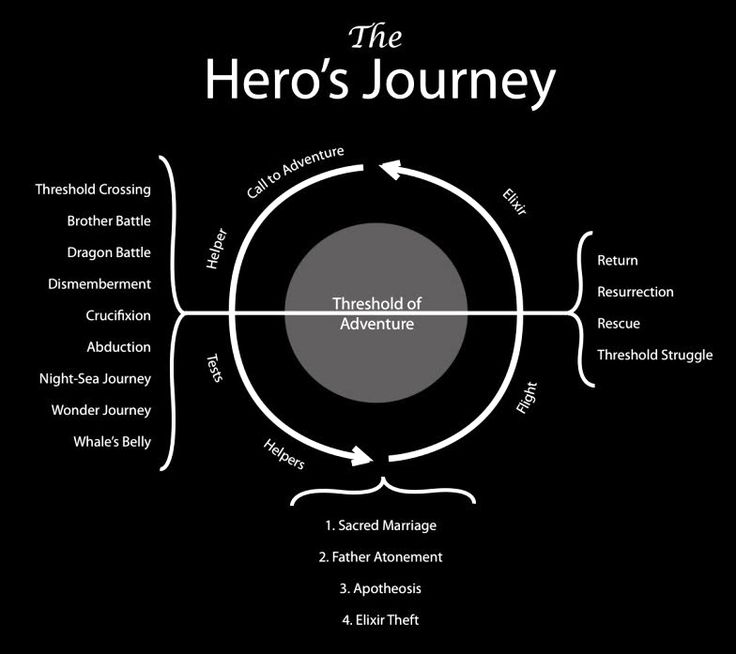 She created the Kübler-Ross model, the theory of the five stages of grief and loss.
She created the Kübler-Ross model, the theory of the five stages of grief and loss.
In her 1969 book, “On Death and Dying,” Kübler-Ross examined the five most common emotional reactions to loss:
- denial
- anger
- bargaining
- depression
- acceptance
Originally, Kübler-Ross referred to them as the “five stages of death.” This was because she was working with terminally ill patients at the time, and these were the common emotions they had regarding their own mortality.
Years after her first book, Kübler-Ross adapted and extended her model to include other kinds of loss. The five stages of death became the five stages of grief.
This grief can come in many forms and for different reasons. Everyone, from all walks of life and across cultures, experiences loss and grief at some point.
Mourning doesn’t come only from dealing with your own death or the death of a loved one. Mourning can also come as a result of an illness, the end of a close relationship, or even the end of a project or dream.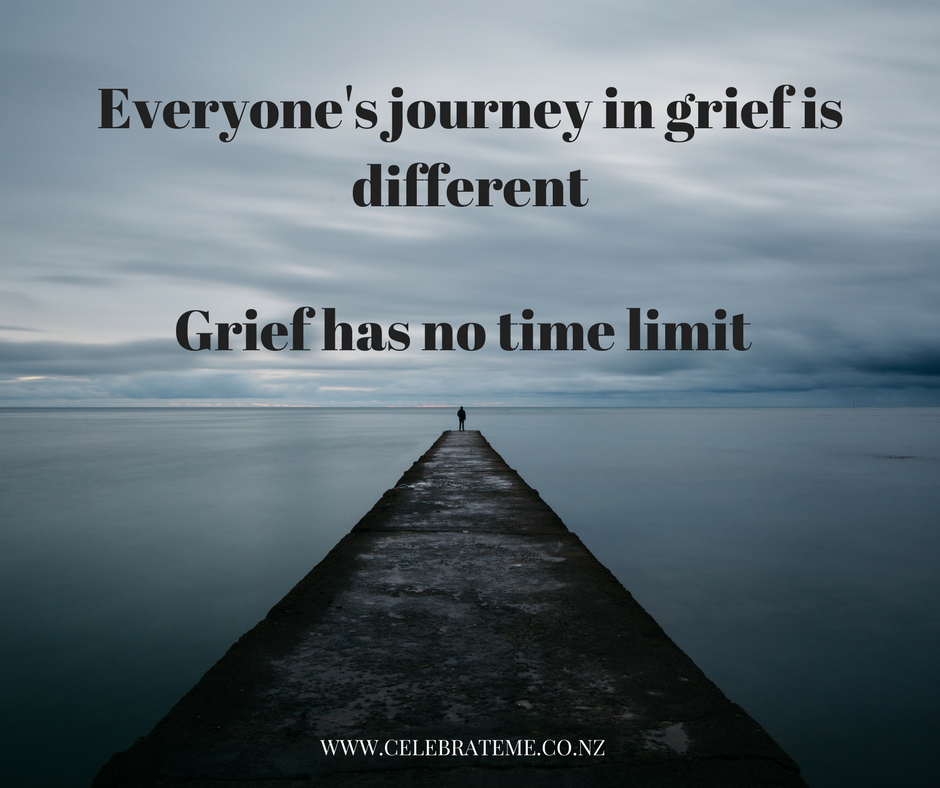
Grief can similarly come from a perceived or real change in your life. For example, moving to a new city, school, or job, transitioning into a new age group, or staying in isolation because of a pandemic.
In other words, there’s no written-in-stone list of “valid” reasons to grieve.
What matters is how you feel. And there are no right or wrong feelings regarding a loss.
Exploring the five stages of grief and loss could help you understand and put into context where you are in your own grieving process and what you feel.
Similarly, if you’re concerned or want to understand someone else’s grieving process, remember that there’s no one way of going through it. Everyone mourns differently.
You could go through many intense emotions, or you could seemingly not react at all. Both responses are valid and not uncommon.
How much time you spend navigating the stages of grief also varies from person to person. It might take you hours, months, or longer to process a loss and heal from it.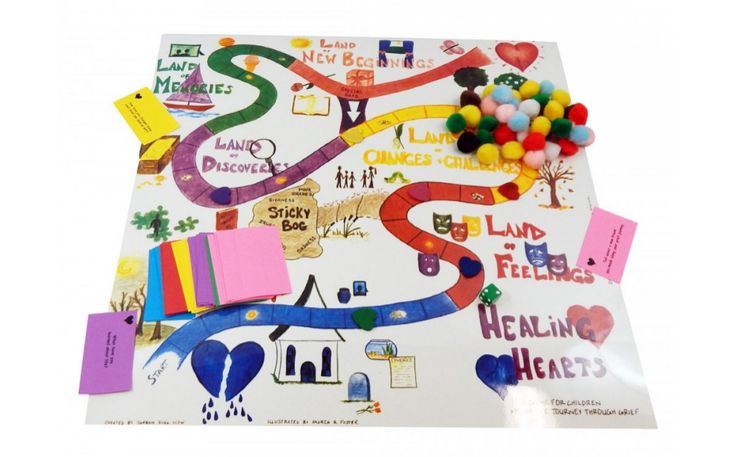
You might not experience all these stages of grief or in the order listed above. You could go back and forth from one stage to another.
You may even skip all these emotions and process your loss differently altogether. The five stages of grief are supposed to serve you as a reference, not as a rule.
For some people, this may be the first response to loss.
Denial is a common defense mechanism. It may help you buffer the immediate shock of the hurtful situation.
As an immediate reaction, you might doubt the reality of the loss at first.
A few examples of this type of denial are:
- If you’re facing the death of a loved one, you might find yourself fantasizing someone will call to say there’s been a mistake and nothing really happened.
- If you’re dealing with a breakup, you might convince yourself your partner will soon regret leaving and come back to you.
- If you lost your job, you might feel your former boss will offer you the position back after they realize they’ve made a mistake.

After this first reaction of shock and denial, you may go numb for a while.
At some point, you could feel like nothing matters to you anymore. Life as you once knew it has changed. It might be difficult to feel you can move on.
The first stage of grief is a natural reaction that helps you process the loss in your own time. By going numb, you’re giving yourself time to explore at your own pace the changes you’re going through.
Denial is a temporary response that carries you through the first wave of pain. Eventually, when you’re ready, the feelings and emotions you have denied will resurface, and your healing journey will continue.
Sometimes pain takes other forms. According to Kübler-Ross, pain from a loss is often redirected and expressed as anger.
Feeling intensely angry might surprise you or your loved ones, but it’s not uncommon. This anger serves a purpose.
It might be particularly overwhelming for some people to feel anger because, in many cultures, anger is a feared or rejected emotion. You might be more used to avoiding it than confronting it.
You might be more used to avoiding it than confronting it.
During the anger stage of grief, you might start asking questions like “Why me?” or “What did I do to deserve this?”
You could also feel suddenly angry at inanimate objects, strangers, friends, or family members. You might feel angry at life itself.
It’s not rare to also feel anger toward the situation or person you lost. Rationally, you might understand the person isn’t to blame. Emotionally, however, you may resent them for causing you pain or for leaving you.
At some point, you might also feel guilty for being angry. This could make you angrier.
Try reminding yourself that underneath your anger is pain. And even if it might not feel like it, this anger is necessary for healing.
Anger might also be a way to reconnect to the world after isolating yourself from it during the denial stage. When you’re numb, you disconnect from everyone. When you’re angry, you connect, even if through this emotion.
But anger isn’t the only emotion you might experience during this stage. Irritability, bitterness, anxiety, rage, and impatience are just some other ways you might cope with your loss. It’s all part of the same process.
Bargaining is a stage of grief that helps you hold on to hope in a situation of intense pain.
You might think to yourself that you’re willing to do anything and sacrifice everything if your life is restored to how it was before the loss.
During this internal negotiation, you could find yourself thinking in terms of “what if” or “if only”: what if I did XYZ, then everything will go back to normal; if only I had done something differently to prevent the loss.
Guilt might be an accompanying emotion during this stage as you inadvertently might be trying to regain some control, even if at your own expense.
All these emotions and thoughts aren’t uncommon. As hard as it might feel, this helps you heal as you confront the reality of your loss.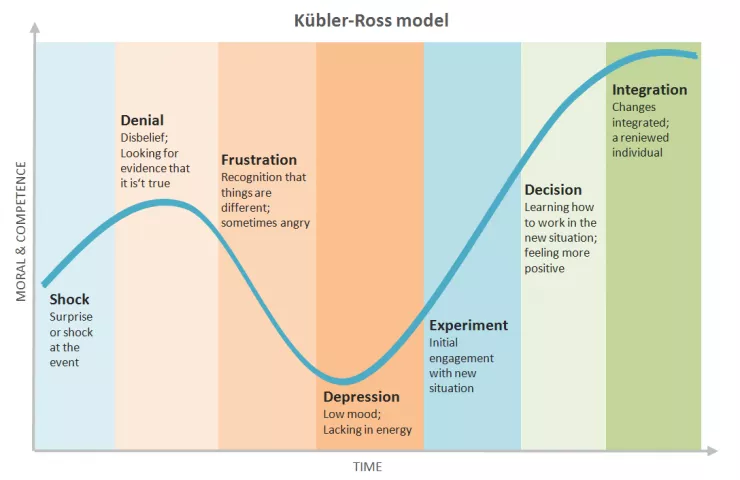
Just as in all the other stages of grief, depression is experienced in different ways. There’s no right or wrong way to go about it, nor is there a deadline to overcome it.
In this instance, depression isn’t a sign of a mental health condition. Instead, it’s a natural and appropriate response to grief.
During the depression stage, you start facing your present reality and the inevitability of the loss you’ve experienced. Understandably, this realization may lead you to feel intense sadness and despair.
This intense sadness could cause you to feel different in other aspects too. You could feel:
- fatigued
- vulnerable
- confused and distracted
- not wanting to move on
- not hungry or wanting to eat
- not able or willing to get ready in the morning
- not able to enjoy what you once did
This is all typically temporary and a direct response to your grieving process.
As overwhelming as it may feel at this point, this stage is a necessary part of your healing journey.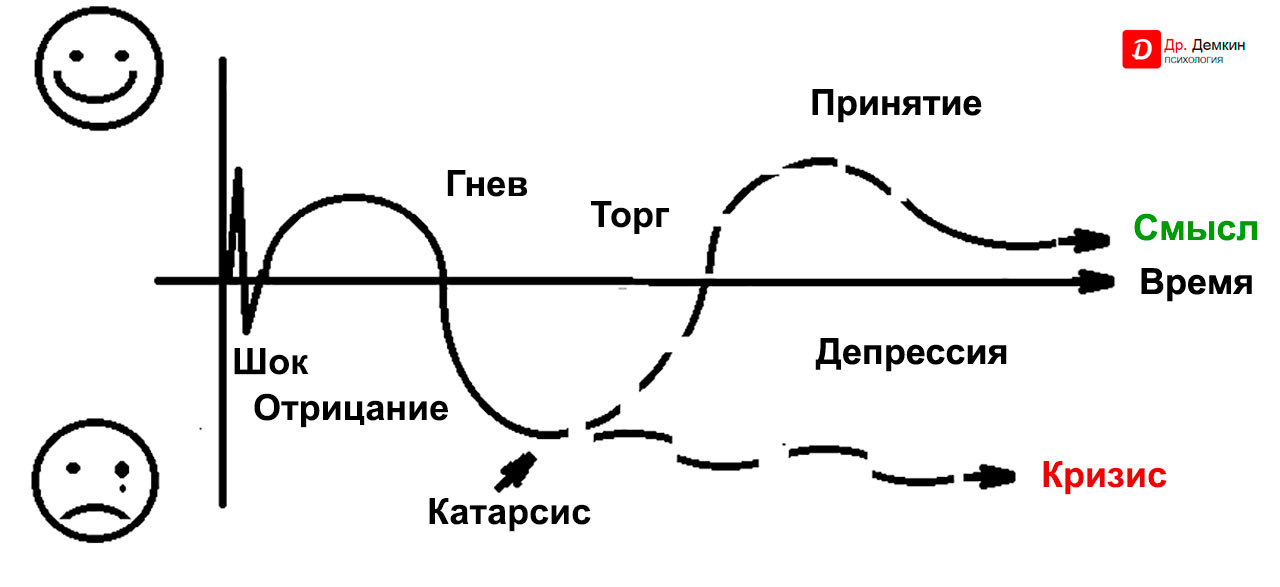
Reaching acceptance isn’t necessarily about being OK with what happened. Depending on your experience, it might be understandable if you don’t ever feel this way.
Acceptance is more about how you acknowledge the losses you’ve experienced, how you learn to live with them, and how you readjust your life accordingly.
You might feel more comfortable reaching out to friends and family during this stage, but it’s also natural to feel you prefer to withdraw at times.
You may also feel like you accept the loss at times and then move to another stage of grief again. This back-and-forth between stages is natural and a part of the healing process.
In time, you may eventually find yourself stationed at this stage for long periods of time.
That doesn’t mean you’ll never feel sadness or anger again toward your loss, but your long-term perspective about it and how you live with this reality will be different.
The five stages of grief proposed by Kübler-Ross have served as a framework for many mental health professionals working with the grief process.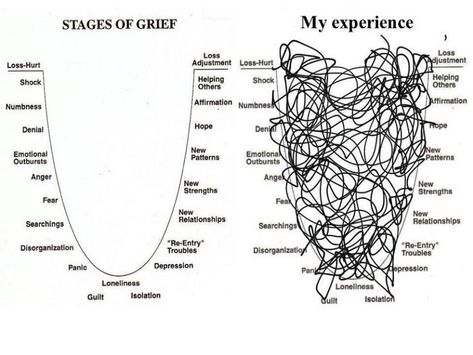
Some of these professionals, such as British psychiatrist John Bowlby, have developed their own work around the emotional responses to loss. Others, including Kübler-Ross herself, have adapted and extended the original five-stage model.
This adaptation is usually known as the Kübler-Ross Change Curve. It extends the five core stages of grief to seven overlapping stages:
- Shock. Intense and sometimes paralyzing surprise at the loss.
- Denial. Disbelief and the need to look for evidence to confirm the loss.
- Anger and frustration. A mix between acknowledgment that some things have changed and anger toward this change.
- Depression. Lack of energy and intense sadness.
- Testing. Experimenting with the new situation to discover what it actually means in your life.
- Decision. A rising optimism about learning how to manage the new situation.

- Integration. Acceptance of the new reality, reflection on what you learned, and stepping out in the world as a renewed person.
Because everyone mourns differently and for different reasons, sometimes you might feel your own grieving process isn’t going “according to the norm.”
But remember, there’s no such thing as a right or wrong way of coping with a loss.
These might be some of the thoughts that could cross your mind when looking at your own or someone else’s way of grieving.
1. ‘I am doing it wrong’
One of the most common misconceptions about grieving is that everyone goes through it in the same way.
When it comes to healing from a loss, there’s no correct way of doing it. You might find it useful to remind yourself there’s no “I should be feeling this way.”
Grieving isn’t about going over or following a set list of steps. It’s a unique and multidimensional healing journey.
2. ‘I should be feeling…’
Not everyone experiences all the above-mentioned stages or even goes through these emotions the same way.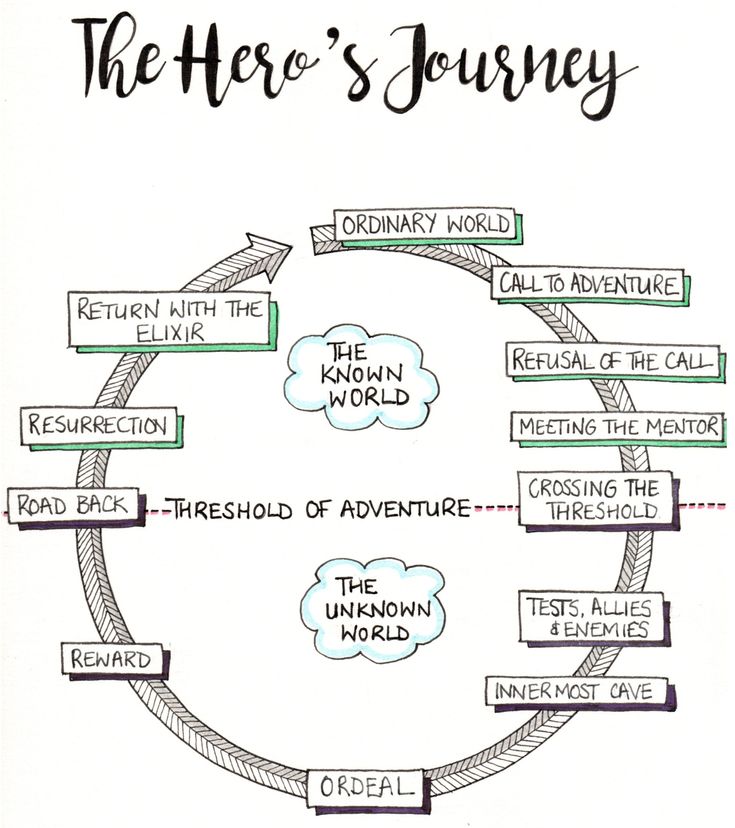
For example, maybe the depression stage feels more like irritability than sadness for you. And denial could be more of a sense of shock and disbelief than an actual expectation that something out of the blue will fix the loss.
The emotions used to contextualize the stages of grief aren’t the only ones you’ll experience. You might not even experience them at all, and that’s natural too.
This is no indication that your healing journey is faulty in some way. Your healing experience is unique to you and valid nonetheless.
3. ‘This goes first’
Remember, there’s no specific or linear order for the stages of grief.
You could move along the stages one by one, or you could go back and forth. Some days you might feel very sad, and the very next day you could wake up feeling hopeful. Then you could go back to feeling sad. Some days you might even feel both!
In the same way, denial isn’t necessarily the first emotion you’ll experience. Maybe your first emotional reaction is anger or depression.
This is natural and part of the healing process.
4. ‘It’s taking too long’
Coping with a loss is ultimately a deeply personal and singular experience. Many factors affect how long it takes.
Some people navigate through grief in a few days. Others take months or longer to process their loss.
You might find it useful to not set any deadlines to your process.
In grief, you’ll experience some of these emotions in waves of intensity. In time, you’ll notice this intensity decrease.
If you feel your emotions stay or increase in intensity and frequency, this might be a good time to seek professional support.
5. ‘I’m depressed’
Going through the stages of grief, particularly the depression stage, isn’t equivalent to clinical depression. There’s a distinction between having clinical depression and grieving.
This means that even though some symptoms might be similar, there are still key differences between both.
For example, in grief, the intense sadness will lessen in intensity and frequency as time goes by.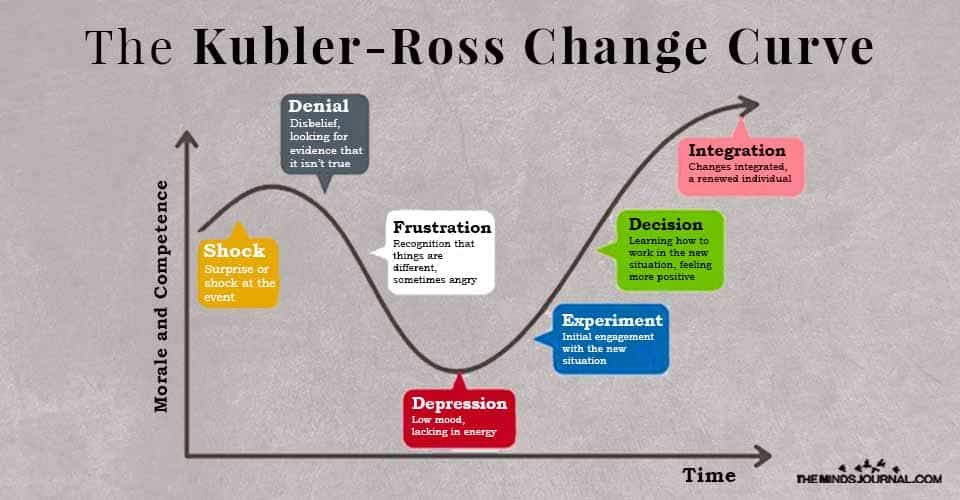 You might even experience this sadness at the same time you find temporary relief in happy memories from times before the loss.
You might even experience this sadness at the same time you find temporary relief in happy memories from times before the loss.
In clinical depression, on the other hand, without the proper treatment, your mood would stay negative or worsen with time. It would likely affect your self-esteem. You may rarely experience feelings of pleasure or happiness.
This doesn’t mean there isn’t a possibility you could develop clinical depression during the grieving process. If your emotions progressively increase in intensity and frequency, reach out for support.
If you’re experiencing intense grief and feel unsure about how to cope with it, reaching out for help can provide comfort and support.
Any reason that’s valid to you is a good reason for reaching out for help.
Other instances in which you might want to seek help processing your loss include the following:
- You need to go back to school or work and have a hard time going about your daily tasks. For example, you’re having trouble concentrating.
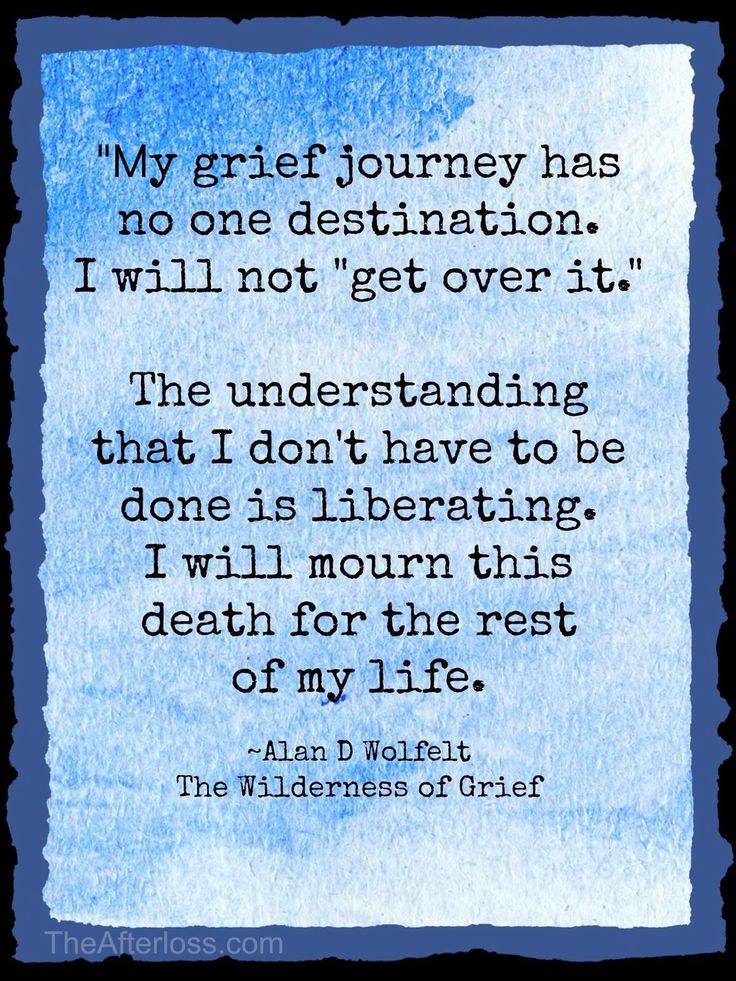
- You’re the sole or main guardian or support source for someone else. For example, you’re a single parent or someone else’s caretaker.
- You’re experiencing physical discomfort or pain.
- You’re skipping meals or medications because you don’t feel like getting up or doing anything.
- Your emotions are increasing in intensity and frequency instead of coming in waves or lessening over time.
- You’ve thought about hurting others or yourself.
If you or someone you know is considering self-harm, you’re not alone. Help is available right now:
- Call a crisis hotline, such as the National Suicide Prevention Lifeline at 800-273-8255.
- Text HOME to the Crisis Text Line at 741741.
There are a few other ways to reach out for help, depending on what is available to you.
Friends and family
Talking with friends or relatives might give you a sense of relief.
Verbally expressing how you feel can sometimes release some of the inner turmoil you might be experiencing.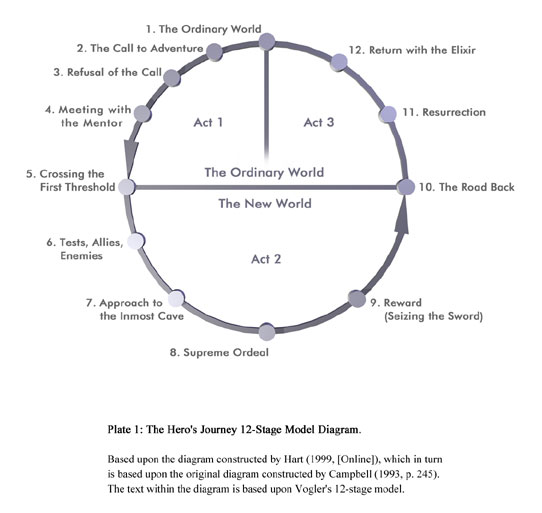
Sometimes you might not feel like talking but instead prefer to have silent company.
Expressing your needs to others can allow them to help you in the way you feel is best for your situation.
Support groups
Engaging in support groups can be helpful too. There are local support groups as well as online support groups.
You can connect to others in the group who have gone through or are going through similar losses. They can direct you to further resources as well.
Support groups can also become a safe space where you can express yourself without feeling judged or pressured if you feel that might be the case when talking to somebody else.
Mental health professionals
Grief counseling and therapy are two ways to work with a mental health professional who might support your own process.
If you have insurance, call your insurer to determine whether this grief counseling is covered under your policy and, if so, under which conditions.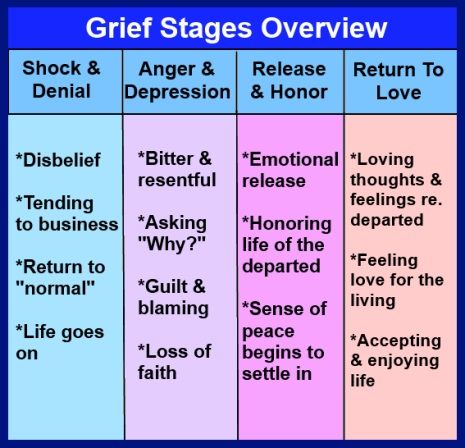
If your insurance doesn’t cover counseling sessions, your primary care doctor might be able to offer some support or guidance.
If you don’t have health insurance or aren’t covered for this service, you could try searching for a local organization that provides grief counseling at a low or no charge.
Many national mental health organizations, like the National Alliance on Mental Illness (NAMI), have local or regional chapters. Calling them directly might give you access to some of this information and their specific grief support services.
You’ve taken the first step by just wondering how you can help your loved one.
Here are some ways you can support them now and in the future.
1. Listen
Perhaps one of the main legacies from Elisabeth Kübler-Ross and her work is the importance of listening to the grieving person.
You might have the best intentions and want to provide comforting words. But in some instances, the best support comes from just being there and making it clear that you’re available to listen to whatever — and whenever — they want to share.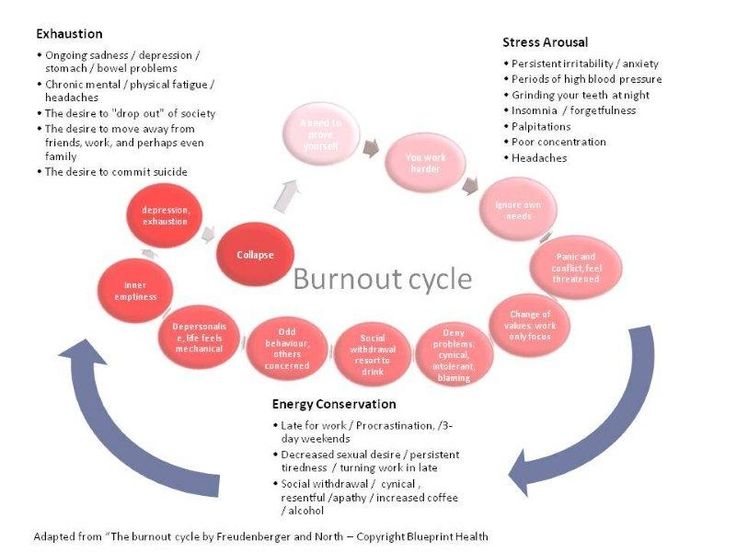
It’s also important to accept it if your loved one doesn’t want to talk with you. Give them time and space.
2. Reach out
Not everyone knows how to comfort others. It might be intimidating or overwhelming seeing someone you care about have a rough time.
But don’t let these fears stop you from offering help or from being there. Lead with empathy, and the rest will follow.
3. Be practical
Look for ways to ease the weight off your loved one’s shoulders. Explore the areas they might need help managing while they process their loss.
This could mean helping with food preparation or grocery shopping, organizing their room or house, or picking up their children from school.
4. Don’t assume
You might want to verbally offer your support and be attentive to whatever they tell you might help them feel better. But avoid assuming or guessing “which step” of the process they’re going through at the moment.
A smiley face or no tears don’t necessarily mean they’re not grieving. A change in their physical appearance doesn’t mean they’re depressed.
A change in their physical appearance doesn’t mean they’re depressed.
Wait for them to express how they feel, if they’re ready, and go from there.
5. Search for resources
You might have the clarity of mind and the energy to browse local support groups and organizations, call an insurance company, and find a mental health professional.
The decision of reaching out for this kind of help is, of course, entirely up to the grieving person. But having the information at hand might save time whenever they’re prepared or willing to take it.
Some resources you might find helpful are:
- GriefShare support groups
- The Compassionate Friends: Supporting Family After a Child Dies
- American Psychological Association: Search for a Psychologist
- Helping Kids Grieve: Toolkit
8 Time travel. Dreams while awake. Techniques for 24 Hour Lucid Dreaming
8
Time travel
You are born in human form and happy in it. However, there are ten thousand other, endlessly transforming forms that are just as good, and the happiness in them is indescribable.
However, there are ten thousand other, endlessly transforming forms that are just as good, and the happiness in them is indescribable.
The sage dwells among these things that can never be lost, and therefore he lives forever.
He readily accepts earthly death, old age, beginning and end, and serves as an example for everyone. [72]
The legendary sage is certainly more aloof than most of us. He is born in human form in a reality of consensus, but changes form in life and death. In this way he sets an example for others how to live forever, being like the very spirit of transformation.
In this chapter, based on the patterns of quantum physics, shamanism and Taoism, we will explore how to leave the human form and travel back and forth in time to future and past lives. Ordinarily, you probably assume that space and time are crucial, and that the past is something that cannot be changed. Perhaps at times it seems to you that time dominates you and determines your whole life. I hope this chapter will change your understanding of time and history.
I hope this chapter will change your understanding of time and history.
Before embarking on a journey through time, let's take a quick look at what we have discovered up to now. In the first part, we focused mainly on the theory and practice of 24-hour Lucid Dreaming and its connections to Aboriginal cultural wisdom, Buddhism, physics, and future prediction.
Based on what we have discussed so far, we should consider that:
• Dreaming is the oldest form of human spirituality; it is central to many native cultures and forms the intuitive basis of Taoism, Buddhism, and quantum theory.
• Without access to Dreaming, you may feel that something is missing in your life; you focus only on the bright side of the moon and ignore its integrity.
• The dream appears at first as a vague tendency or foreboding of future events; A dream is an experience that precedes signals. The dream reflects and self-reinforces itself in the form of communicative flirtations, creating observable forms that we see in everyday reality. Similarly, the mathematical formalism of quantum theory predicts that observable reality emerges from Self-reflecting quantum wave functions.
Similarly, the mathematical formalism of quantum theory predicts that observable reality emerges from Self-reflecting quantum wave functions.
• My "I" does not perceive, but is part of the process of Self-reflection together with the universe surrounding me. The "I" does not observe, but is first attracted to objects that have their own ability to "flirt" with me.
• My ordinary identity is the result of the marginalization of much of myself, my Big Self, which includes everything that captures my attention.
• In the Dream, such concepts as my subjective and objective "I", "you" and "he" or "she" are indefinite and intertwined processes that cannot be distinguished.
There are at least three ways to achieve lucidity in the Dreaming experience.
• You can experience sensory experiences before they manifest in everyday reality.
• You can notice fleeting signals and events, such as sudden thoughts or momentary bodily sensations, finding their sensory essence.
• You can achieve mindfulness by focusing on persistent cues and sensations, such as bodily symptoms, by going back to the "root causes" of those experiences.
The second part of this book is about training your attention in these three forms of awareness. In it, we will explore the applications of lucid dreaming to various aspects of life, including time escape and dealing with bodily symptoms, addictions, body contact, relationship issues, and large group issues.
Out of Time
If you have ever experienced déjà vu or experienced – with or without drugs – being transported to another space and time, you will understand Chuang Tzu’s words that open this chapter: “You are born in human form and are happy in her. However, there are ten thousand other, endlessly transforming forms that are just as good, and the happiness in them is indescribable.
Many people feel that they have already been someone else or lived in other times. Most people have experienced some form of this timeshifting experience at some point in their lives.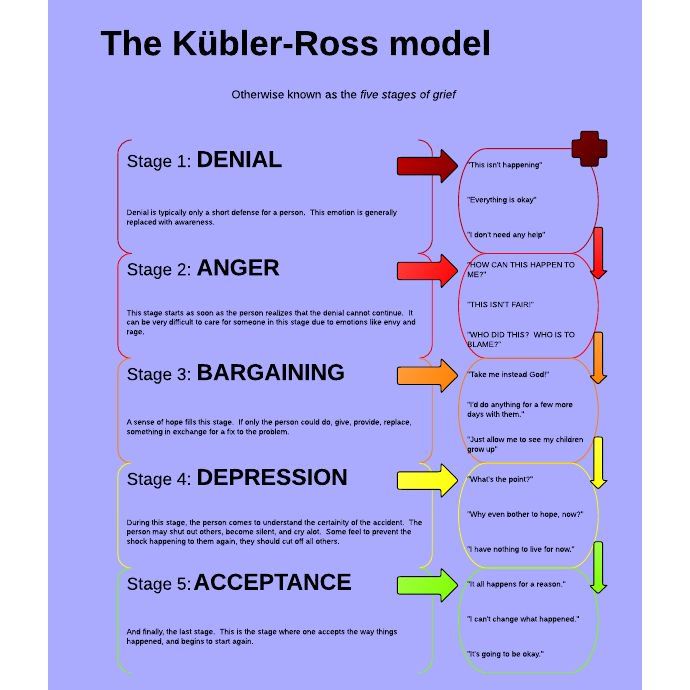
A spaceship leaving the space and time of the Earth.
When I ask my listeners in seminars how they think time travel works, they come up with many theories, for example:
• The way out of time and space comes from Spirit. I am only a carrier or a means of manifestation of what is happening.
• There is no time. Any reality that we come out of or into which we enter is, in fact, permanent.
• The experience of moving through time is explained by the memory of ancestors. We are experiencing something experienced by our ancestors and preserved or transmitted in the memory of generations. Time travel can be thought of as a "memory of the soul" awakened by visual, auditory or olfactory impressions, as an experience that the soul has already experienced in another body, in another life.
• Déjà vu occurs under the influence of certain highly magnetic or dense areas of the Earth.
• Time travel is a bodily experience that occurs, for example, when several people in a room have the same memory of a different time and space at the same time.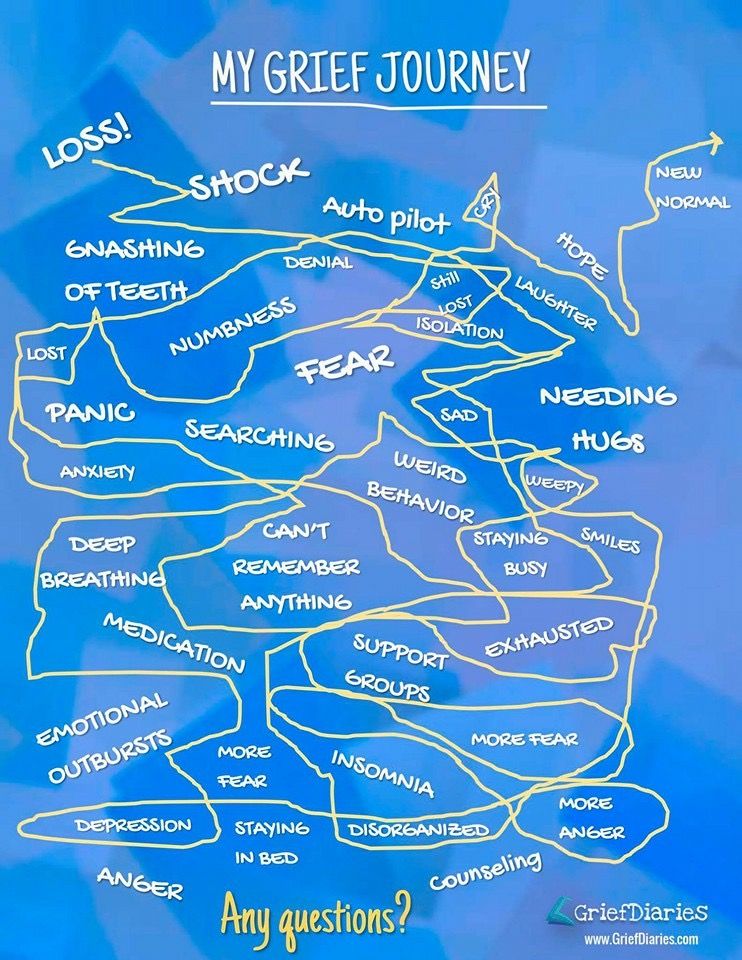
Feynman Theory
These theories reflect the mystical and parapsychological ideas of various traditions. It may come as a surprise to some readers to learn that an example of time travel can also be found in quantum physics.
For example, Nobel Prize-winning physicist Richard Feynman developed his own theory of time travel to describe the behavior of elementary particles, although he never called their behavior time travel. He suggested that particle mathematics in quantum physics describes the world in two different ways: as going forward and going backward in time. By studying and interpreting quantum physics, he discovered that two separate realities are possible, one of which physicists have not yet discovered - a reality with a reverse course of time.
His theories gave me a general framework for relating the psychology of altered states of consciousness to the behavior of particles in quantum physics.[73] If you are afraid of science, don't panic or worry about physics! I use Feynman's theories as metaphors for psychological theories. You can think of these theories as something like a dream that offers you a new scheme for exploring the universe.
You can think of these theories as something like a dream that offers you a new scheme for exploring the universe.
Feynman studied mathematical formalism for such elementary particles as electrons. He knew that these formulas predicted known experimental results, but he also believed that they predicted new and as yet undiscovered behavior of an electron when it entered a magnetic field.
As you can imagine, when a charged particle, like an electron, enters a magnetic field, it begins to move under its influence in much the same way as small pieces of metal move in a magnetic field.
Feynman proposed two interpretations of the mechanism of particle-field interaction. One interpretation suggests the spontaneous creation of "virtual" short-lived particles. They exist for such a short time that they can never be measured. The second interpretation is not related to virtual particles, but to the possibility of going back in time or going out of time.
According to Feynman's first interpretation, when an electron enters a magnetic field, virtual particles are suddenly and briefly created.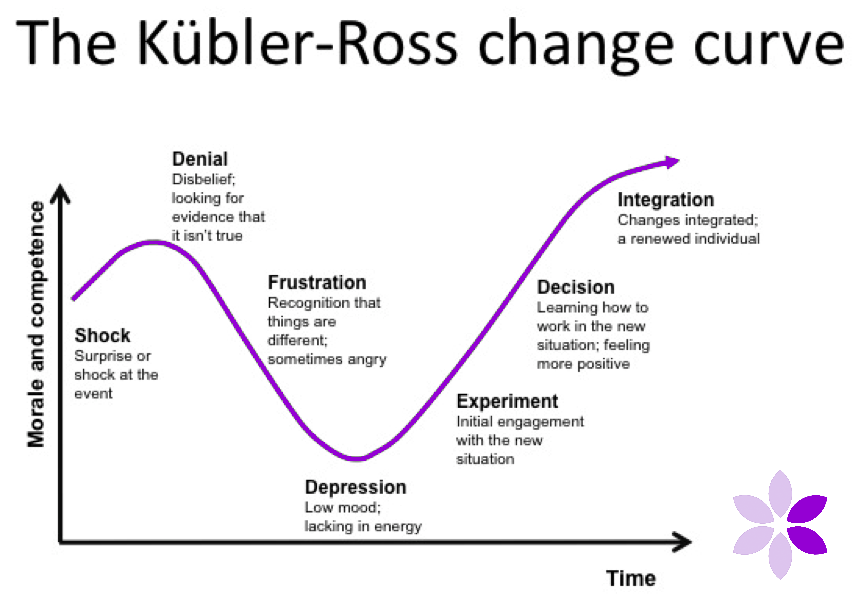 These particles collide with an electron entering the field, deflecting and changing the trajectory of its movement. For a reader unfamiliar with physics, this may sound strange, and indeed, virtual particles are a strange thing. Although they cannot be directly observed, the theories of modern science allow for the possibility of their existence.[74]
These particles collide with an electron entering the field, deflecting and changing the trajectory of its movement. For a reader unfamiliar with physics, this may sound strange, and indeed, virtual particles are a strange thing. Although they cannot be directly observed, the theories of modern science allow for the possibility of their existence.[74]
Perhaps physics will make more sense to you if you think about the social analogy in human life. Do you remember the first time you had to perform in front of an audience? As soon as you think about the place where you were to perform, all kinds of characters appeared in your head. Some of them wanted to help, while others criticized you. These characters do not exist in reality, but they influence your state of mind.
In Feynman's first interpretation, what happens to an electron in an electric field is similar to the experience of a person entering a performance room. Out of nowhere, positive and negative virtual particles appear, changing the initial trajectory of the electron. In this interpretation of quantum events, an electron entering a magnetic field collides with an oppositely charged particle (positron), which annihilates it and sends the original electron in the other direction.
In this interpretation of quantum events, an electron entering a magnetic field collides with an oppositely charged particle (positron), which annihilates it and sends the original electron in the other direction.
In the second interpretation, Feynman considered the equations of physics and realized that it was possible to interpret them in another way. Instead of colliding with virtual particles, an electron entering the field, , could exit time and, for a brief moment, experience "time travel" or even move backwards in time. After that moment, he could again move forward in time, leaving the field with a different trajectory.
In short, the first interpretation assumes virtual particles colliding with an electron, but no backward movement in time. The second interpretation assumes the reverse course of time, but no virtual particles.
The equations of physics allow for both interpretations, since no one can say with certainty what happens when an electron enters an electric or magnetic field.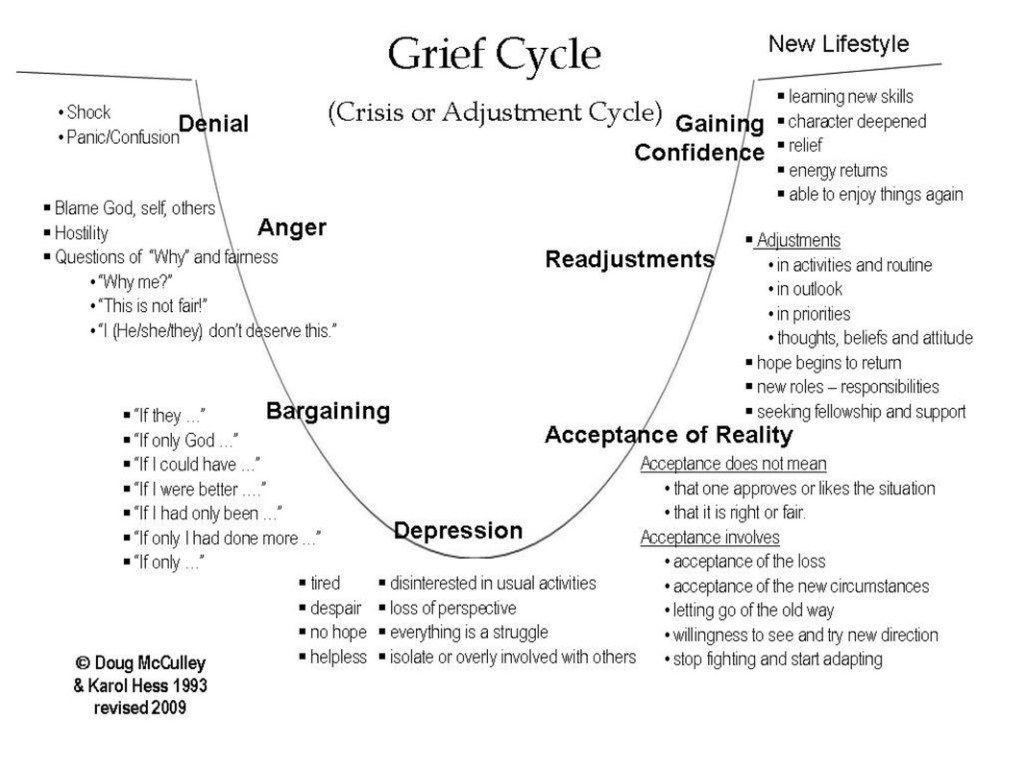 We cannot directly measure events that happen so quickly. We can only measure summary results; small particles cannot be traced due to a fundamental uncertainty in nature. Since both interpretations are consistent with the rest of physics, they represent acceptable possible theories (pending new experiments and theories that will provide a better explanation).
We cannot directly measure events that happen so quickly. We can only measure summary results; small particles cannot be traced due to a fundamental uncertainty in nature. Since both interpretations are consistent with the rest of physics, they represent acceptable possible theories (pending new experiments and theories that will provide a better explanation).
In the graphs below, I've plotted Feynman's question and two different answers as to what happens to the original electron entering the field.
These graphs are called "spatio-temporal diagrams". The horizontal line corresponds to movements in space, while the vertical line going up represents time going forward. All events going forward in time will go up.
The first diagrams: What happens in a magnetic field?
Feynman asked the question: "What happens to an electron when it enters a magnetic field?"
What happens when an electron enters a strong field?
To answer his own question, Feynman drew something like this diagram.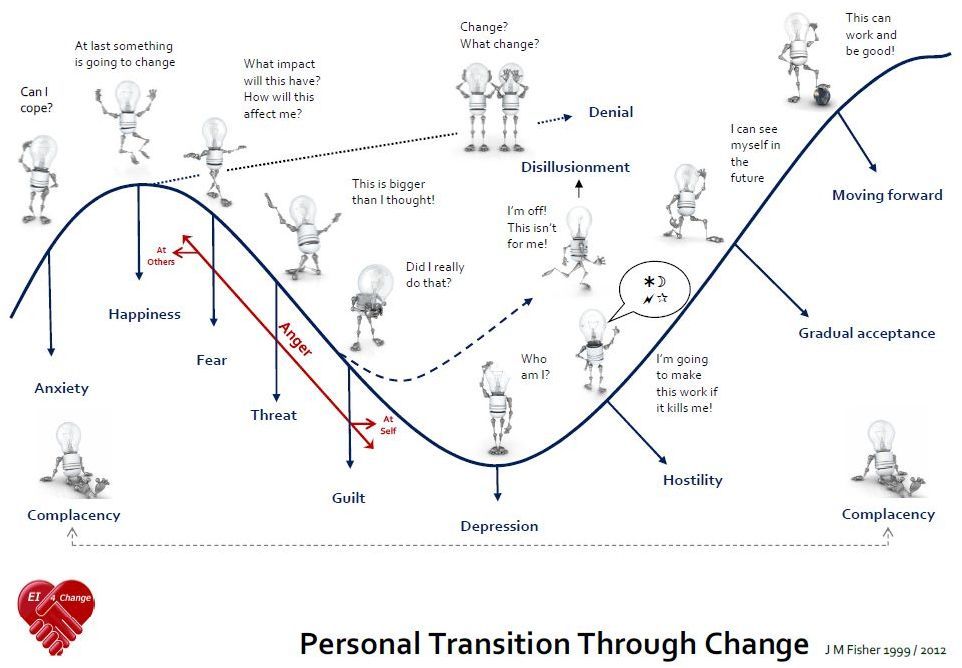
What is really going on in the field?
After drawing a diagram of "What really happens in the field," Feynman offered two possible explanations for how the field affects the electron. Let's call the first of them "collision theory", and the second - "reverse motion theory in time".
Feynman's two responses
These diagrams may look strange, but in reality they are not too different from the image of colliding glass balls.
In the left diagram, corresponding to the collision theory, the initial electron entering the field at the top of the diagram is annihilated by the positron (which was a member of the previously created pair of virtual particles).[75] In the right diagram, corresponding to the theory of reverse motion in time, there are no virtual particles - instead, the electron itself collides with the field, and changes its direction, moving backward in time.
This second diagram comes as a big surprise.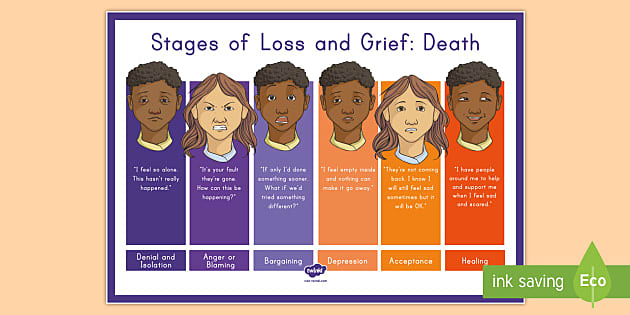 When an electron encounters a field, it can move back in time by one minute or ten thousand years, depending on the situation. (Since we are unable to measure what happened, it is even possible that he first traveled to the future!)
When an electron encounters a field, it can move back in time by one minute or ten thousand years, depending on the situation. (Since we are unable to measure what happened, it is even possible that he first traveled to the future!)
To date, no one can prove exactly which of the diagrams is correct; physicists imagine that the electron has both possibilities - or simply consider the second option interesting, but not subject to experimental verification.
Feeling into these diagrams
Now, in order to understand how you can move back in time or get out of the forward flow of time, you need to feel what is happening in these diagrams. Let's start with the first one.
If that electron were sentient and able to speak, like a person entering a room where he is going to perform for the first time, he could say, “Hmm, there is some tension here. Now I do not want to pay attention to this tension, but I will focus on my upcoming speech. I will try to go my own way and ignore the field of tension in this room.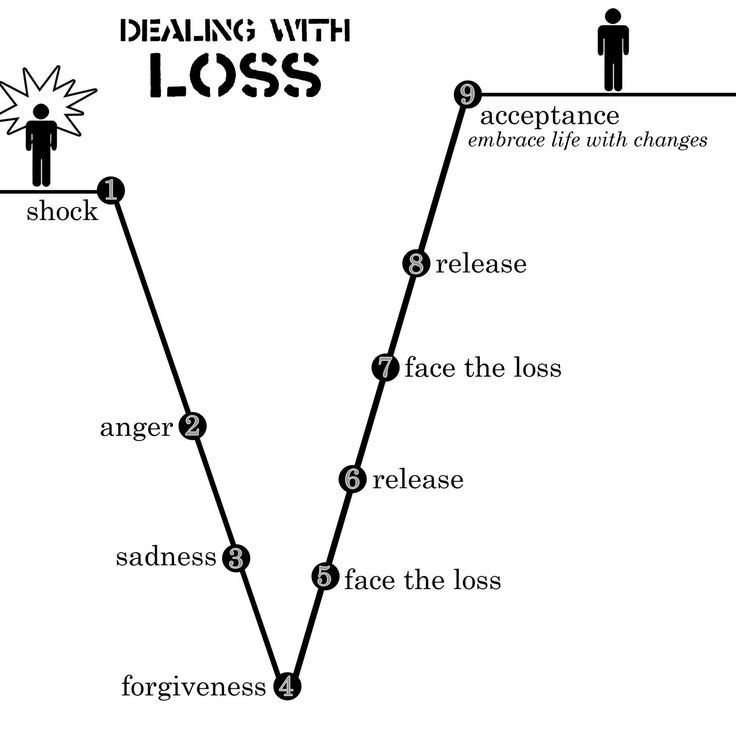 "
"
This electron does not consciously experience the field; instead, it marginalizes the magnetic field and tries to keep moving. Because of this tension, he at first becomes confused, embarrassed, almost completely unsettled. Inside his head, he hears a critical voice and is so overwhelmed that he cannot remember his speech. This electron, so to speak, is annihilated. If I continue to anthropomorphize the path of this electron, I can say that he did not have awareness in relation to the field; in return, he marginalized it. After some time, he comes to his senses, remembers his text, continues his speech and feels better.
Now look at the second diagram. Again imagine that the electron has not only sensitivity, but awareness. Since the electron has awareness, it feels it when it enters a tense magnetic field. If the electron is a person, then at this stage he notices that strange things are happening in the audience. There is some unknown trend. Instead of marginalizing this experience of tension, he decides to become aware and back away from his original plan.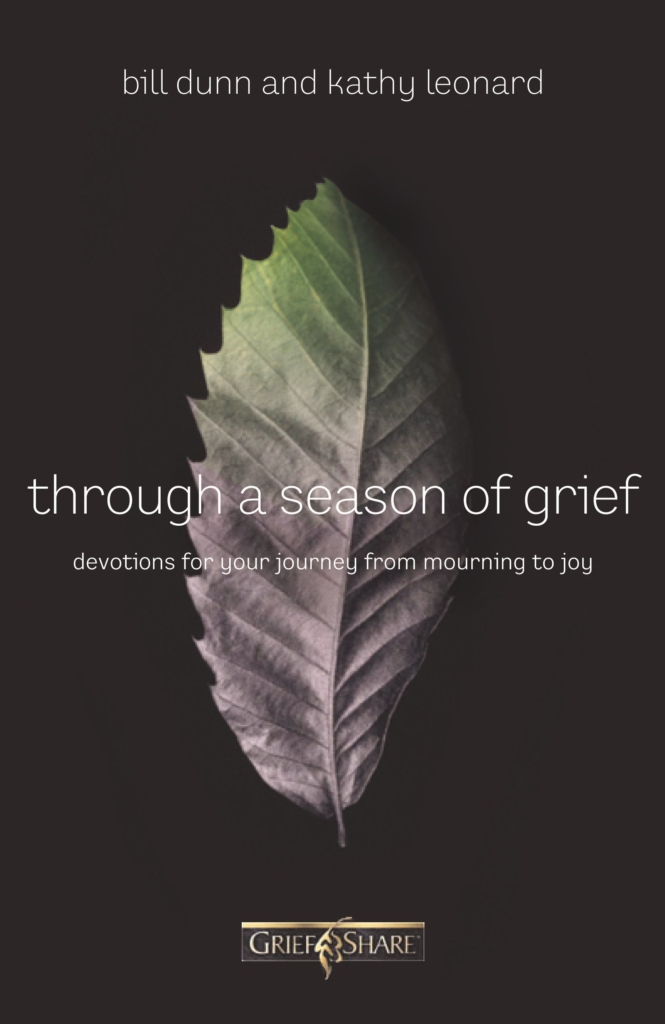
His mind is clouded and he gets to the core of the field, he feels something critical. He experiences criticality and a critical inner figure. Now, instead of moving forward, he steps out of time, becomes this critical figure, and begins to tell the audience that he has always been critical of what he is going to say next. He goes back in time to the point where his own critical faculty was beginning to develop, and takes the entire audience back in time with him. They are surprised, but very interested in his modesty. He refers to something in each of them.
Finally he completes a brief overview of his previous life and tells people that his critical nature has helped him to be attentive to everything he says and not to offend others, but to remember everyone. Having said this, he notices that the field is changing and experiences a return to the state that existed before this critical field. Returning to the present time, he begins his scheduled performance.
After "retroflection" over the past, he returns to everyday reality and continues to move forward in time! His tension is gone and the performance is going great.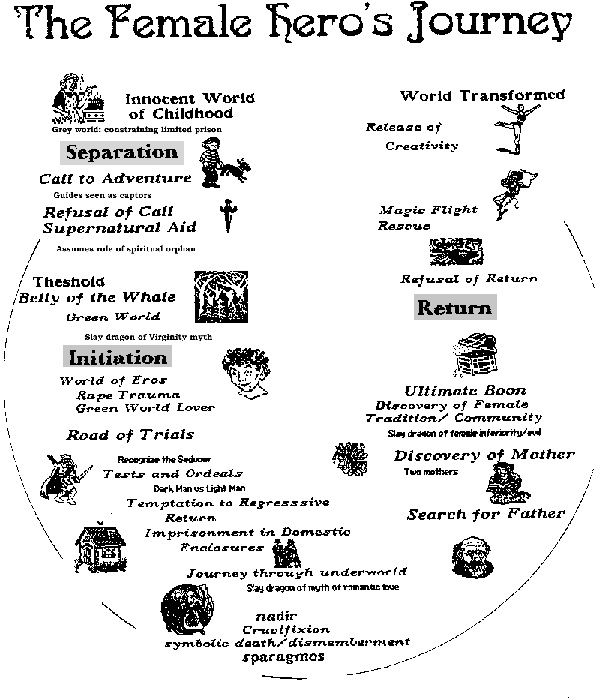 "Friends! he says, “now that I have shown one side of myself and, perhaps, the field surrounding our topic today, I would like to present the other side: the topic itself!”
"Friends! he says, “now that I have shown one side of myself and, perhaps, the field surrounding our topic today, I would like to present the other side: the topic itself!”
No one, either inside or outside, destroys him or even thinks of criticizing him; he included all possible thoughts in his own way. It includes everyone and everything.
Two Feynman diagrams roughly describe what an electron could experience. Of course, he was not talking about sentient or conscious beings. He simply gave two basic mathematical schemes for these two different possible phenomena.
Each person has had a personal experience that can be described by these diagrams. Whenever you find yourself in a field of tension or in an exciting situation, you are acting in accordance with the Theory of collision, or with the Theory of backward movement in time. If you are not aware, you marginalize tensions and operate under the influence of positive and negative inner figures. Conversely, if you are aware and follow your inner experience, then you forget about your self-determination.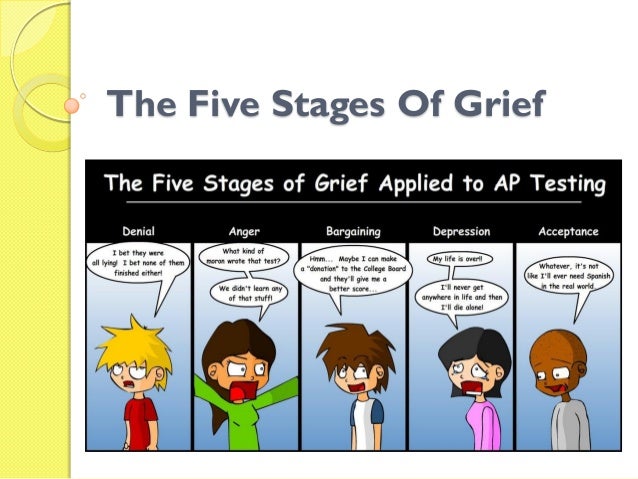 Shamans have always done this by changing form, going out of time into new forms and times and later returning to the "real" world with information from the "other world".
Shamans have always done this by changing form, going out of time into new forms and times and later returning to the "real" world with information from the "other world".
Similar to Feynman diagrams, there are two kinds of psychology. In one, you live your life and develop secondary processes, that is, if something bothers you and you feel that it is not part of who you are or who you want to be, you ignore it. This is the story of "eyebrows". An ignored event does not go anywhere, but over time it disrupts your attention or even unsettles you. Most of us behave this way almost all the time. We find ourselves in difficult spaces and exceptional periods of life and stubbornly strive forward, refusing to free ourselves from our self-identity. Then we are pushed somewhere.
Another possibility is to get out of time and space and free yourself from your self-identity. We become aware of our sensory experience, and even before it manifests itself in positive or negative figures, we are freed from all eyebrows.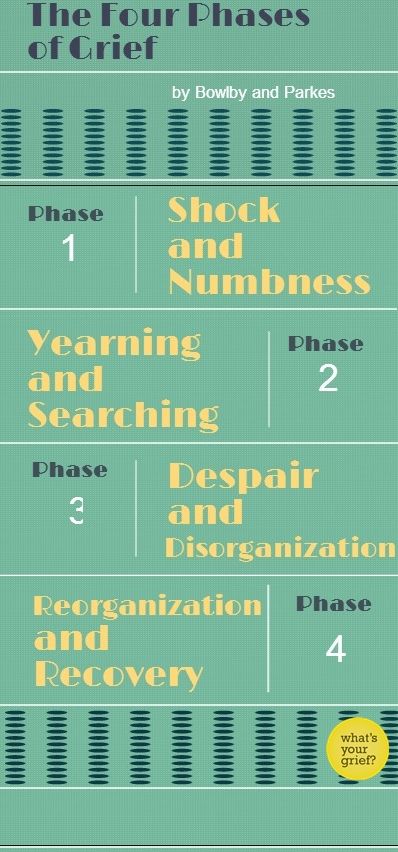 Even before we can talk about tension, we change and stop holding on to time, moving with the flow. Moments like this require a lot of awareness, personal courage and flexibility.
Even before we can talk about tension, we change and stop holding on to time, moving with the flow. Moments like this require a lot of awareness, personal courage and flexibility.
For example, when I studied psychology in Zurich in the 1960s, I visited the therapist Franz Riklin, Jung's nephew. Strange things always happened around him. One day I made an appointment to see him on Saturday. When the time came for my visit, I went to the old part of Zurich, where his office was located. It was a wonderful autumn morning, the trees were painted in bright colors and it seemed that the bells of Zurich were ringing joyfully.
However Riklin didn't come to the door after I rang for a few seconds. I thought something unusual was going on. I called and called and, having achieved nothing, I sat down and patiently waited for what would happen next. About five or ten minutes passed, and apparently unwittingly, I fell asleep sitting on the ground with my back against the front door of his office.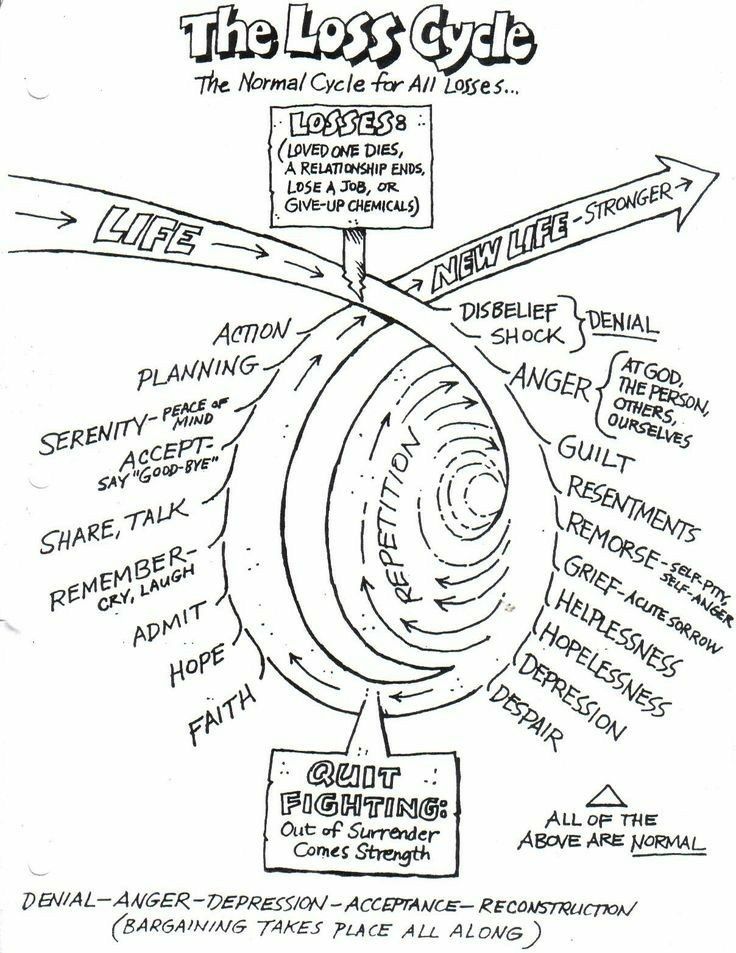
About an hour passed before his door suddenly opened, as if by itself. In a sleepy trance, I fell, sprawled on the floor of his waiting room. I looked up and saw him standing over me, rubbing his eyes and looking rather sleepy. He had obviously just woken up.
Swaying, he asked in a sleepy voice, "What's going on?" I said in a confused and annoyed tone, "You didn't come on time!" He replied with the same annoyance: "Now is the right time." Defensively, I asked, "Right time for who?" He burst out laughing until tears welled up in his eyes, and cryptically announced, "The right time for us."
I had no idea what he was talking about. My mind was distracted by a sudden fantasy. I could not go further into this conflict as I suddenly saw spirits flying around his room. Although I was ashamed of this vision, I nevertheless told him about the spirits. He calmly replied, “Stay with it. What year is this? I thought I was going crazy. It wasn't the kind of therapy I thought I needed, but he said I felt like we were in the 15th century. We went on an imaginary journey to the 15th century. He was ready for anything and so was I, at least by his side. Apparently, it's easy to get out of time around some bright people. You will not be able to enter a trance around other people, even if you are hit on the head with a stone.
We went on an imaginary journey to the 15th century. He was ready for anything and so was I, at least by his side. Apparently, it's easy to get out of time around some bright people. You will not be able to enter a trance around other people, even if you are hit on the head with a stone.
Riklin has always traveled to other times and spaces. That morning, my relationship with him gave me courage, allowing me not only to feel the sleepy, foggy field in which we were, but also to use this field as an auspicious and rarely occurring opportunity to exit from time.
Time Travel Exercise
Time travel events happen spontaneously, or you can learn to experience them at will. Such training is the goal of the exercise described below.
To do this exercise, you will have to allow yourself to imagine again that your shape can change. You will experiment with your destiny. (If altered states of consciousness scare you for some reason, just read this exercise; you don't have to dive into it yourself.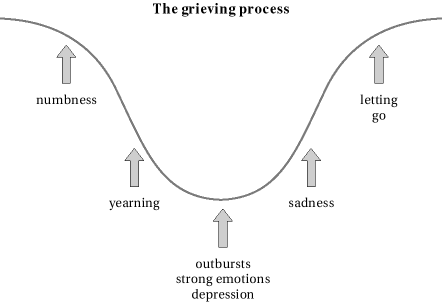 )
)
Flirting in reality
Describe your everyday life, your current experience of time and space.[76] What is life like? Is your time compressed, boring, relaxed? What is the space like for you? Do you experience it as full, empty, colorful, infinite, limited?
Relax again; take a position of ignorance, obscurity. Close your eyes and focus on your breathing. Notice the nature of the field around you, the kind of mental or physical atmosphere you are currently living in. This is similar to how a magnetic field affects the trajectory of an electron. Is this field tense, strange, or pleasurable?
Use your conscious attention. If you are meditating, slowly open your eyes and look around through half-closed eyelids. Let the field express itself in something that grabs your attention. If more than one thing grabs your attention, let your unconscious mind decide what to focus on.
Find the essence of the thing that grabs your attention and explore the energy or power of that essence. Be patient; explore its sensory core, the seed from which this object arises.
Be patient; explore its sensory core, the seed from which this object arises.
Remain in the world of this essence, prematerial events, dreams. It requires conscious attention. Don't marginalize your experience because it seems too irrational. Just let it arise in connection with your attention. Don't let yourself get distracted. Describe the world of this entity, the thing that captured your attention. Explore its time, its space and its atmosphere. What is the time there? What is the space?
Exit regular time. Imagine the time period and position in space, the world from which this event came. When you're ready, let go of your self-determination and experiment with changing shape. Change your look. Allow yourself to step out of human time and be in the new time and space of this object. Feel its time, its spirit and then move into its space. Imagine that you are moving, feeling, seeing, living in your new essence. Be there if you can. Change shape.
Step out of time and describe this new life. Do you have a specific role in this world? Don't rush into this experience. Imagine a story about the experience of your role in this period, let the story unfold, let there be music, poetry and art. To do this, you need to relax and believe in your imagination. Allow yourself to dream. Finally, let this experience give you another name. What is your real name? Take time for it, let it affect you.
Do you have a specific role in this world? Don't rush into this experience. Imagine a story about the experience of your role in this period, let the story unfold, let there be music, poetry and art. To do this, you need to relax and believe in your imagination. Allow yourself to dream. Finally, let this experience give you another name. What is your real name? Take time for it, let it affect you.
Look at yourself in ordinary time from the point of view of this new world. How do you look in everyday life? Is there anything in your time travel life that you would like to bring into your daily life?
Consider your two lives - what do they have in common, what is similar? This similarity is something that you might want to be more aware of. This community can be a timeless, immortal part of you.
Notice if and when you marginalize this eternal part of yourself. Notice or feel what life this new aspect of yourself is trying to generate.
Consider a problem, tension or conflict in your daily life. Is it connected, and how, with the marginalization of your eternal essence?
Is it connected, and how, with the marginalization of your eternal essence?
The field you live in has been expressed in the form of your time travel, a kind of virtual reality, just as the critical atmosphere of the audience created critical figures in the lecturer's mind. Similarly, the electric field created virtual particles that collided with the electron.
Instead of succumbing to virtual experiences, you entered into them in another time period, becoming aware of what grabs your attention. By changing form, feeling into what is happening and freeing yourself from your everyday self, you have stepped out of time. This exercise is learning what the shaman Don Juan calls "controlled intemperance," following the path of the heart, the path of the senses. This is what Chuang Tzu was talking about: “You are born in human form and happy in it. However, there are ten thousand other, endlessly transforming forms that are just as good, and the happiness in them is indescribable. The sage dwells among these things that can never be lost, and therefore he lives forever.”[77]
The sage dwells among these things that can never be lost, and therefore he lives forever.”[77]
By dwelling in timeless experiences that can never be lost, you discover that aspect of yourself that lives forever.
Memory knots
Feynman's theory of what happens to an electron in an electric field serves as a metaphor for what happens to you in an atmosphere.
In one scenario, you find yourself at the mercy of other people's influences and are nervous.
In the other, we become aware and change form, moving out of time into the eternal part of ourselves.
This text is an introductory fragment.
5.3. Journey
5.3. Travel After a suitable place has been chosen, preparatory ceremonies have been carried out and the most favorable time for this journey has come, the process of immersion begins. However, it is preceded by a small preparatory
However, it is preceded by a small preparatory
5.3.2. Journey to ISS
5.3.2. Journey to the ISS A journey in the ISS usually begins with a transition to one of the subtle worlds. transitionAfter building a magic circle or other protected space, there is a concentration on the archetypes of the final destination of the journey, trajectory
Journey to yourself
Journey to yourself In the simplest case, left alone (alone), you can relax - but for this you need to stop the flow of thoughts about business and worries. Take a look around. Look at what from the world around you is worth rejoicing at, for what you should feel gratitude?
Projection and time travel
Projection and time travel The truism "time heals" is misleading.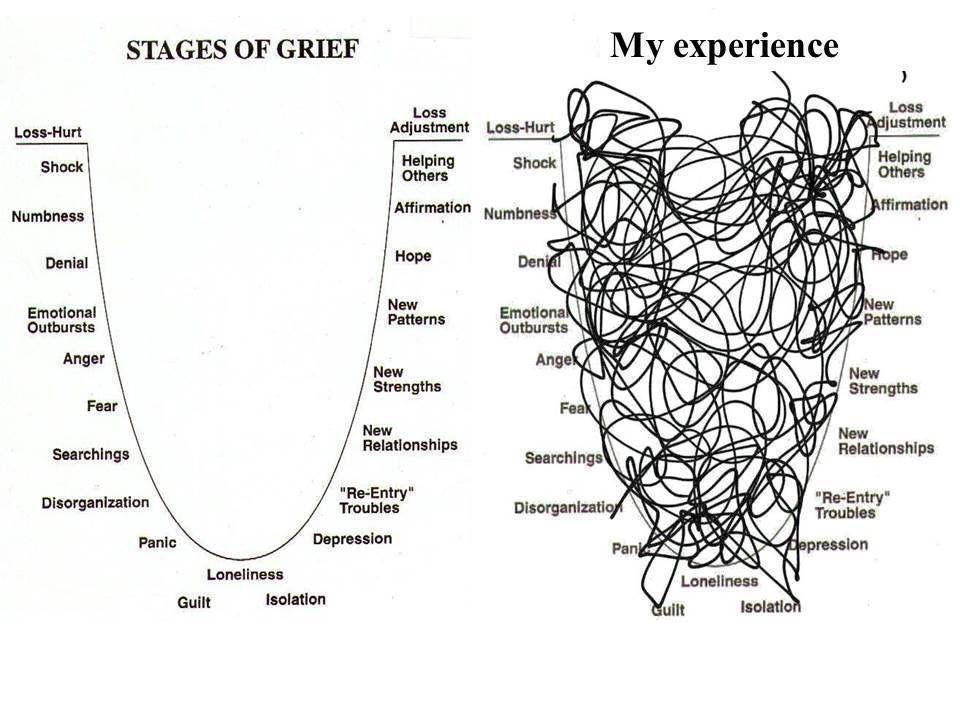 Heals not in itself the passage of time. Imagine that Rip van Winkle was distressed or upset about something right before falling asleep for twenty years. Waking up despite the long past
Heals not in itself the passage of time. Imagine that Rip van Winkle was distressed or upset about something right before falling asleep for twenty years. Waking up despite the long past
Our Journey
Our trip In this book, I am serving as a guide on a scientific expedition into the depths of emotion territory, a journey that should lead to a greater understanding of some of the most difficult moments in our own lives and in the world around us. Purpose of this
Travel
Travel When a woman embarks on a heroic journey, she faces challenges, obstacles, and dangers. Her answers and actions will change her. She will discover what is important to her and whether she has the courage to act according to her
Hero's Journey
Hero's Journey The story of David Rigmore describes the Hero's journey.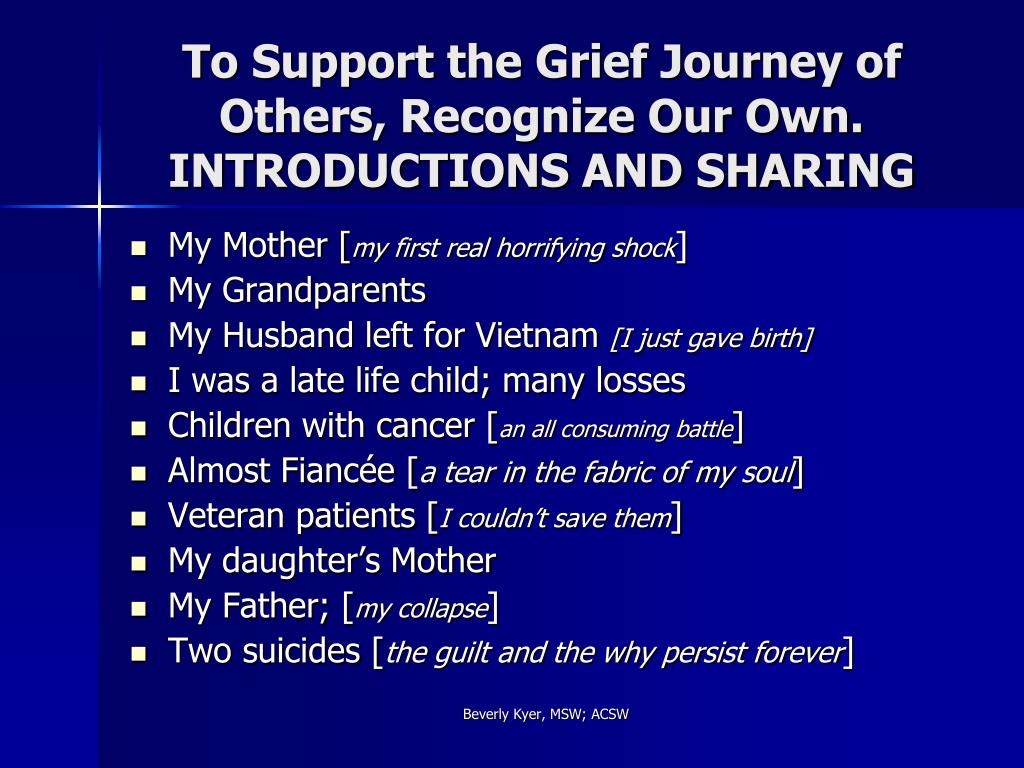 The Hero's Journey is a special genre of story about a man who firmly holds on to his goal and overcomes various obstacles in life. Many of the stories you will find in this book,
The Hero's Journey is a special genre of story about a man who firmly holds on to his goal and overcomes various obstacles in life. Many of the stories you will find in this book,
My Journey
My trip I am the third daughter in the family. Sixty-five years ago, my father, ignoring the recommendations of doctors, insisted that his wife, my mother, become pregnant again. He wanted a son, and my mother did not want any more children at all. I can't claim that being at
Time Travel: Body Messages
Time Travel: Body Messages To learn to understand your body language, I recommend that you look back to your childhood. Recall episodes from the past - joys, sorrows, fear. Resurrect your earliest memories: first day of school or meeting your best friend,
Chapter 8 Time Travel
Chapter 8 You are born in human form and happy in it.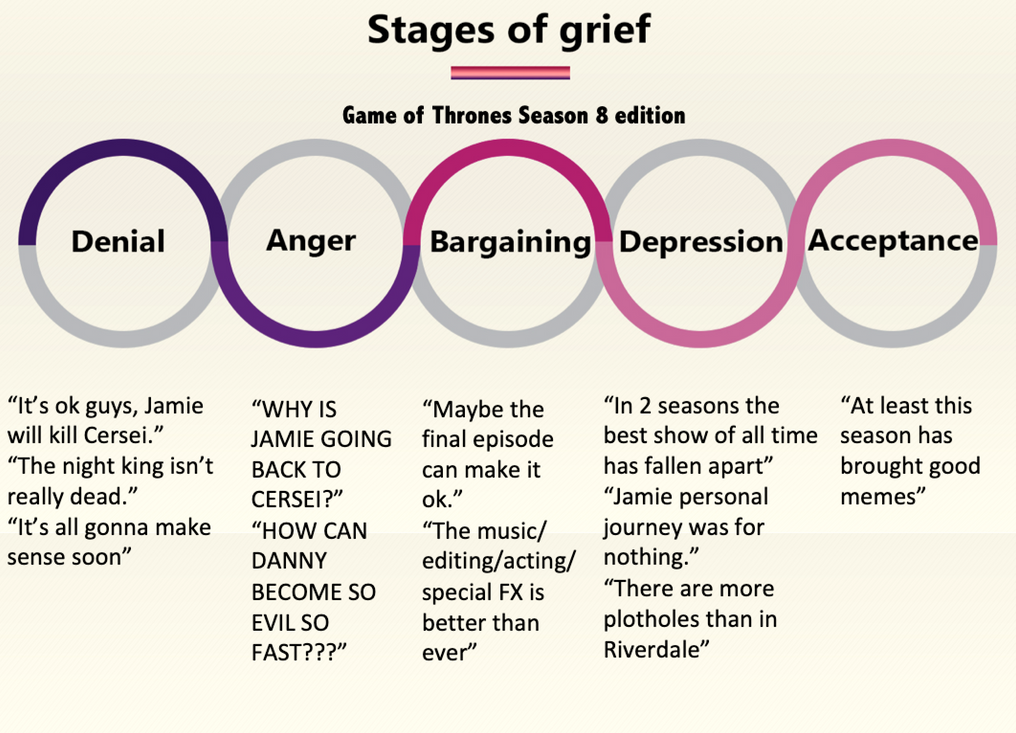 However, there are ten thousand other, endlessly transforming forms that are just as good, and the happiness in them is indescribable. The wise man dwells among these things that can never be
However, there are ten thousand other, endlessly transforming forms that are just as good, and the happiness in them is indescribable. The wise man dwells among these things that can never be
Journey beyond space and time
Travel beyond space and time Alfekka stepped out of the shower, feeling refreshed and energized. After her morning ritual, which included a long shower, chakra cleansing, molecular remodeling, and an antioxidant flush, she was ready to meet the
7 memorization tips that work
Insufficient vocabulary is the eternal sadness of foreign language learners. Khariton Matveev, co-founder of the Skyeng school, shares proven ways to memorize new words.
English level test
Find out your level, get recommendations for learning and a promotional code for English lessons as a gift
The human brain tends to save effort (some will call it laziness): if there is a chance to somehow simplify the process, it is sure to use this chance will take advantage.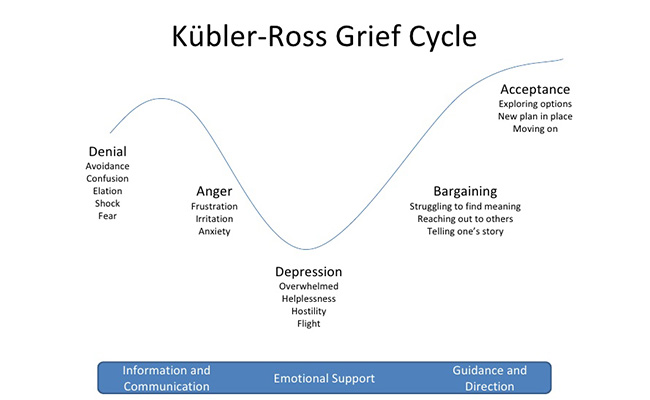 Our cunning "processor" admits new foreign words to the hall of long-term memory far from immediately; first they have to serve their time in a kind of waiting room - in short-term memory. If a new word is not used, not repeated, it will be forgotten rather quickly: the brain mercilessly gets rid of unnecessary information. If you repeat the memorized word - and you need to do this at strictly defined moments - you will remember it forever. What is the secret of correct memorization of new information?
Our cunning "processor" admits new foreign words to the hall of long-term memory far from immediately; first they have to serve their time in a kind of waiting room - in short-term memory. If a new word is not used, not repeated, it will be forgotten rather quickly: the brain mercilessly gets rid of unnecessary information. If you repeat the memorized word - and you need to do this at strictly defined moments - you will remember it forever. What is the secret of correct memorization of new information?
How we remember information: types of memory and the Ebbinghaus curve
So, human memory is divided into two types:
- Short-term or operational
- Long term
The information that enters the brain is first stored in RAM. Over time, depending on the frequency of use, this information becomes a long-term, long-term memory. Back at the end of the 19th century, the German psychologist Hermann Ebbinghaus experimentally proved the well-known postulate of a direct family relationship between learning and repetition. During the experiment, Ebbinghaus determined exactly when to repeat new words in order to remember them for a long time, if not forever.
During the experiment, Ebbinghaus determined exactly when to repeat new words in order to remember them for a long time, if not forever.
The sad fact is that Hermann Ebbinghaus' most valuable discovery is hardly used today. Analysts and developers at Skyeng School hope to change this situation: a mobile application for learning new words using the Ebbinghaus discovery is currently under development. The release of the application is planned soon - follow the news of the company.
Many methods offer to learn 100 words in an hour or 1000 words in 3 days - and this is possible. But the problem is that, once in short-term memory, new words do not pass into long-term memory: easy come - easy go (what comes easy, goes easy).
Demo lesson for free and without registration!
Take a lesson, find out about the school and get a promotional code for English classes
7 + 1 effective way to memorize foreign words
Tip 0: Follow the rational repetition mode
So, the very first, even zero tip: to remember a new word forever , stick to the following rep schedule:
| Repetitions | Repetition intervals |
| 1 | Immediately after learning a new word |
| 2 | 20-30 minutes after previous |
| 3 | One day after previous |
| 4 | 2-3 weeks after previous |
| 5 | 2-3 months after previous |
| 6 | 2-3 years after previous |
Tip 1: Memorize interesting things
The traditional approach to learning new words, tested by generations of schoolchildren, is this: foreign words are given in lists by topic, for example, “Introduction”, “Letter to a friend”, “My day”.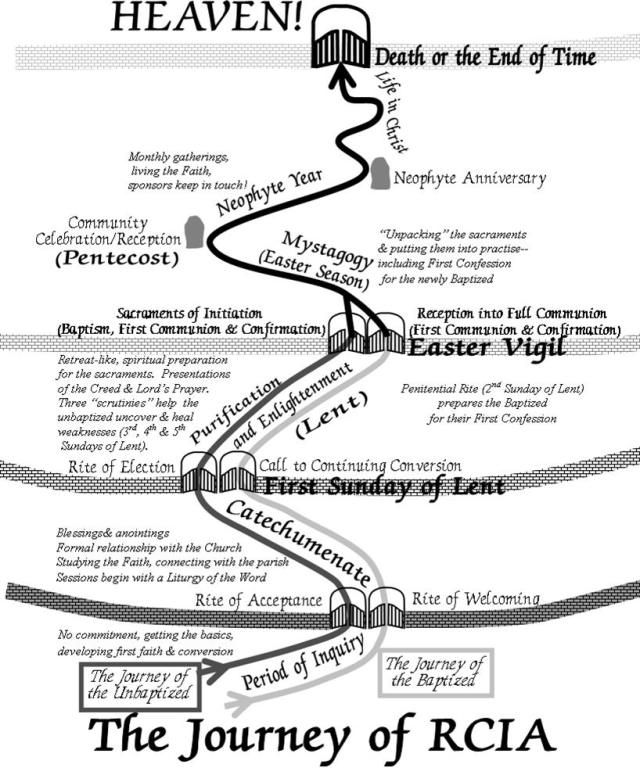 The set of topics is standard and universal, which is not always effective: if the topic does not arouse interest, it is much more difficult to learn new vocabulary. The experience of our school shows that if the choice of the studied words is approached in strict accordance with the specific goals and interests of each student, at the intersection of useful and pleasant, the result is optimal!
The set of topics is standard and universal, which is not always effective: if the topic does not arouse interest, it is much more difficult to learn new vocabulary. The experience of our school shows that if the choice of the studied words is approached in strict accordance with the specific goals and interests of each student, at the intersection of useful and pleasant, the result is optimal!
For example, if you like the Game of Thrones series, you will be much more interested in learning words, generating images and concepts that are related to the plot of the film, for example: queen - queen, northern - northern, wall - wall, castle - castle.
Tip 2: Think deeply
The law of comprehension: according to Ebbinghaus, meaningful material is remembered 9 times faster. It is not so much the words and sentences that make up the text that are imprinted in the memory, but the thoughts contained in them.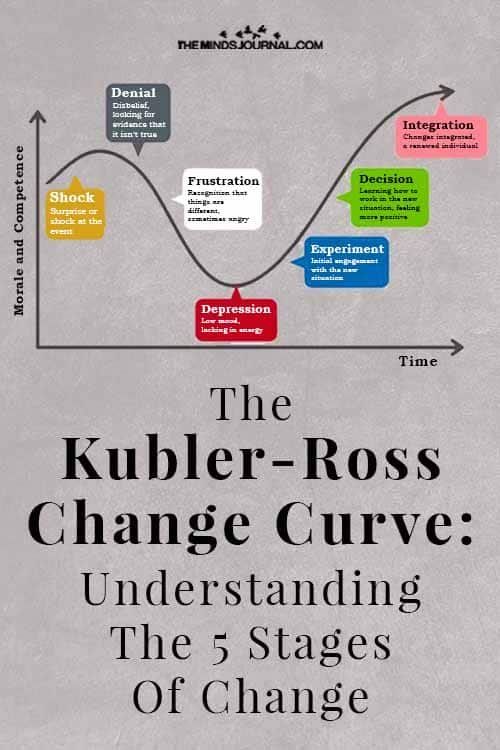 They are the first to come to mind when you need to remember the content of the text.
They are the first to come to mind when you need to remember the content of the text.
However, learning how to properly organize information at the time of memorization is not an easy task. You can use key words, diagrams, charts and tables. The forecasting technique is also effective: after starting to read a paragraph, try to draw a conclusion on your own after putting forward several arguments by the author, explain to yourself what you have read, even if it seems obvious to you. Having formulated the information in your own words, you will remember it for a long time.
Tip 3: Strengthen the first impression
To better remember a new word, connect 5 senses plus imagination: feel the situation, imagine a picture, try to smell and taste, say the word - or sing it.
Visualize, imagine: in a distant northern (northern) country, behind a high fortress wall (wall), a majestic castle (castle) rises, in which a powerful queen (queen) lives . .. How high is the wall, how gloomy and impregnable is the castle, how beautiful is the throne ruler! Create a picture in your imagination, live the situation and the new vocabulary will be remembered easily and for a long time.
.. How high is the wall, how gloomy and impregnable is the castle, how beautiful is the throne ruler! Create a picture in your imagination, live the situation and the new vocabulary will be remembered easily and for a long time.
Tip 4: Learn in different contexts
The Law of Context: Information is easier to remember and recall when it is related to other simultaneous experiences. The context in which an event occurs is sometimes more important to remember than the event itself.
Our memory is associative. Therefore, try to change the place of preparation, for example, to learn different topics in different rooms (kitchen, bedroom), on the road (metro, car) and even at work (office, "negotiation"). Information is associated with the situation, the recollection of which will help to remember the content of the topic.
Tip 5: Learn more often, but less
Learning is like eating: it is better to absorb information in small parts, taking small breaks.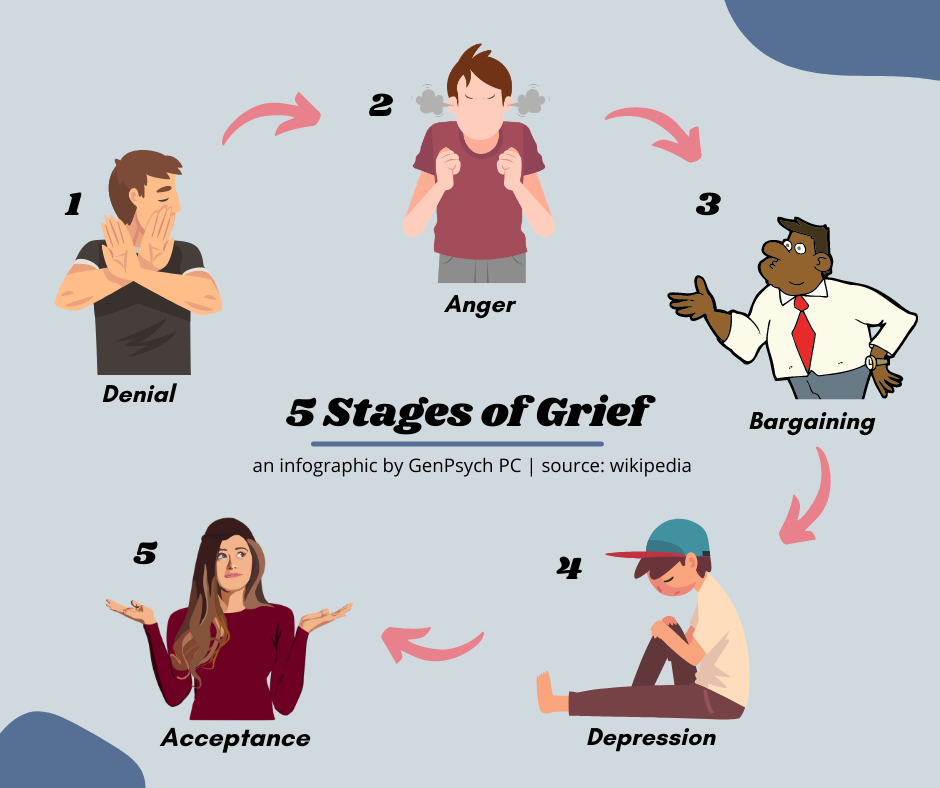 It is better to learn a maximum of 10 objects (words or rule components) in one session. After that, you need to take a 15-minute break, otherwise the subsequent training will not be complete. Learn words in line, on the subway - impulse learning is much more effective than continuous learning.
It is better to learn a maximum of 10 objects (words or rule components) in one session. After that, you need to take a 15-minute break, otherwise the subsequent training will not be complete. Learn words in line, on the subway - impulse learning is much more effective than continuous learning.
Tip 6: Learn important information at the beginning and end
The law of the region, known to us from the film "Seventeen Moments of Spring": the information presented at the beginning and at the end is best remembered. It is more effective to learn especially difficult and intractable words at the beginning and at the end of a ten-minute session - this way they are better deposited in memory.
Tip 7: Use mnemonic techniques
When studying a word, it is useful to choose an associative anchor image, for example: clever (smart) - a smart cow eats clover. The image should be bright, understandable, perhaps absurd - unexpected associations fix the word well in memory.